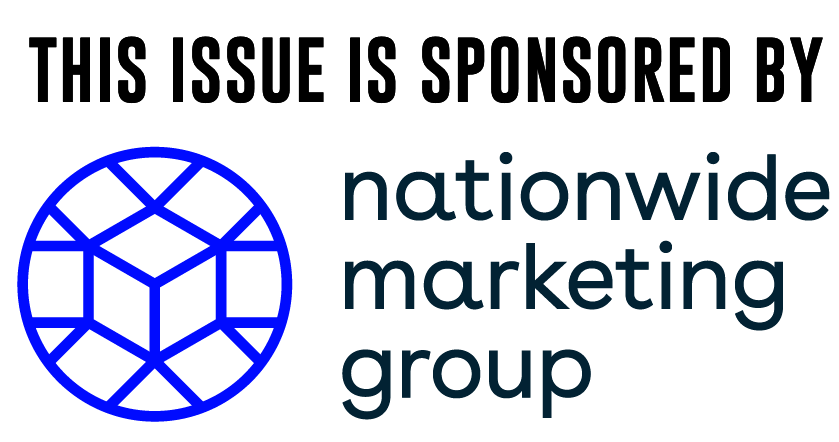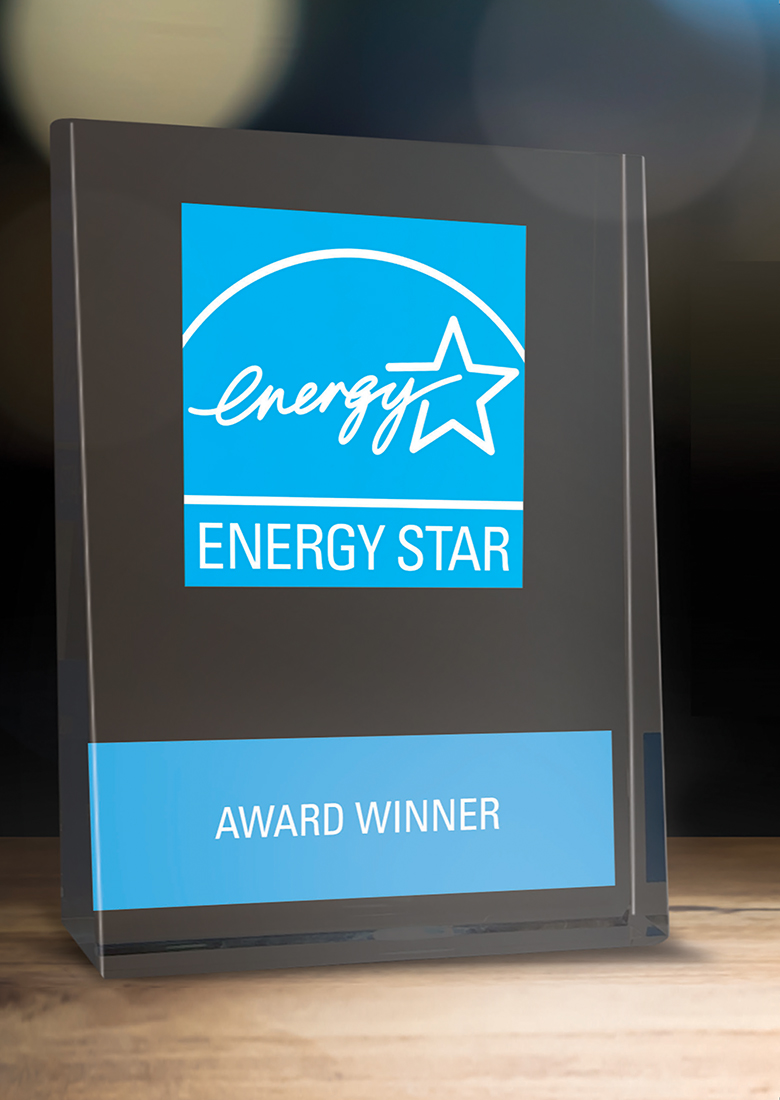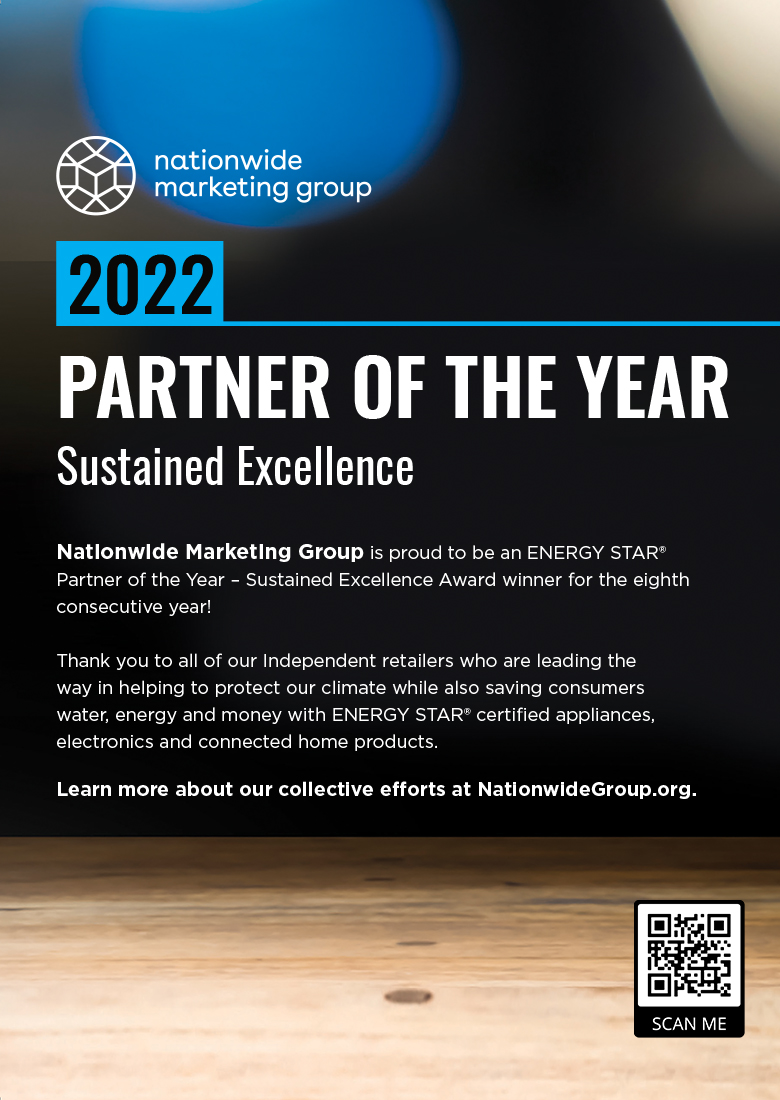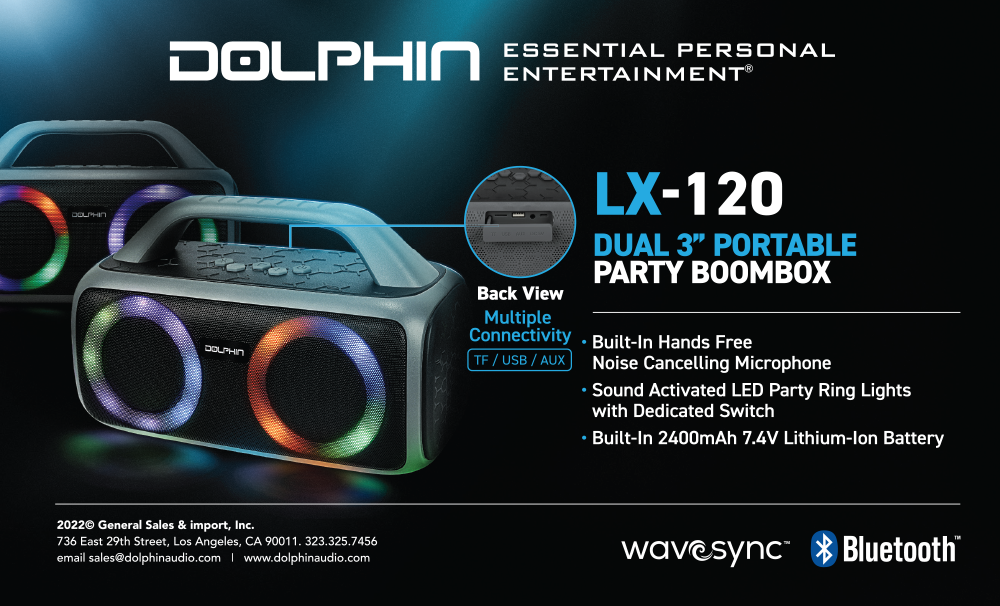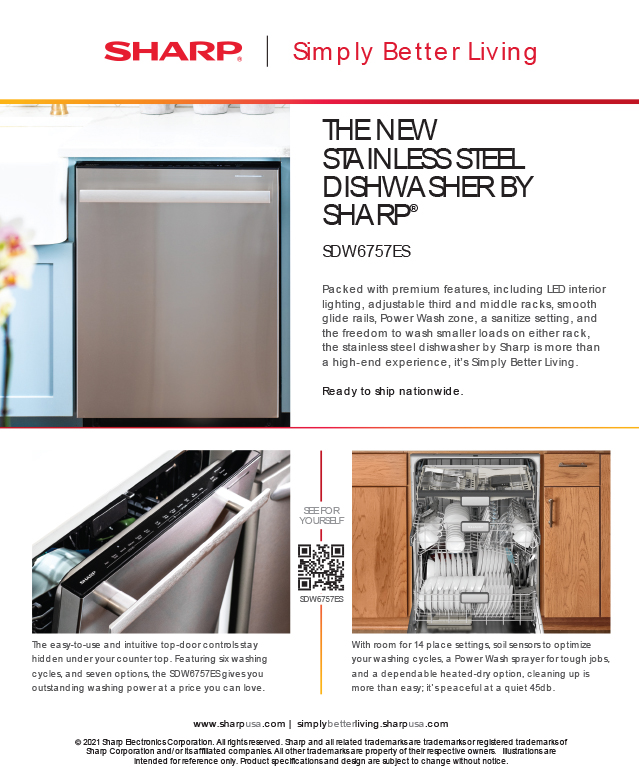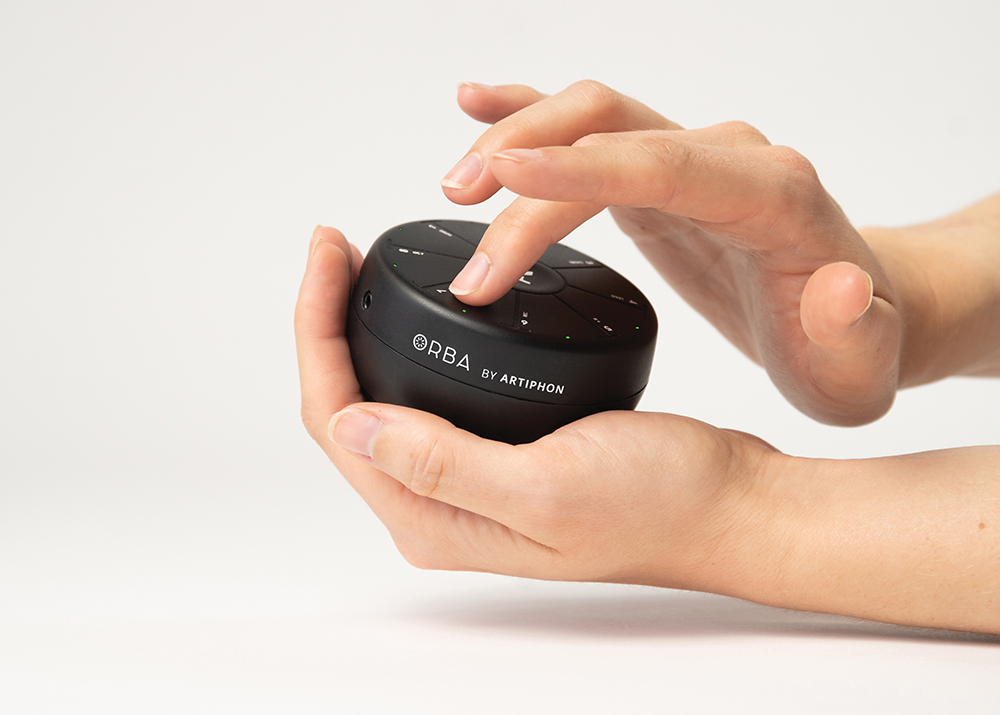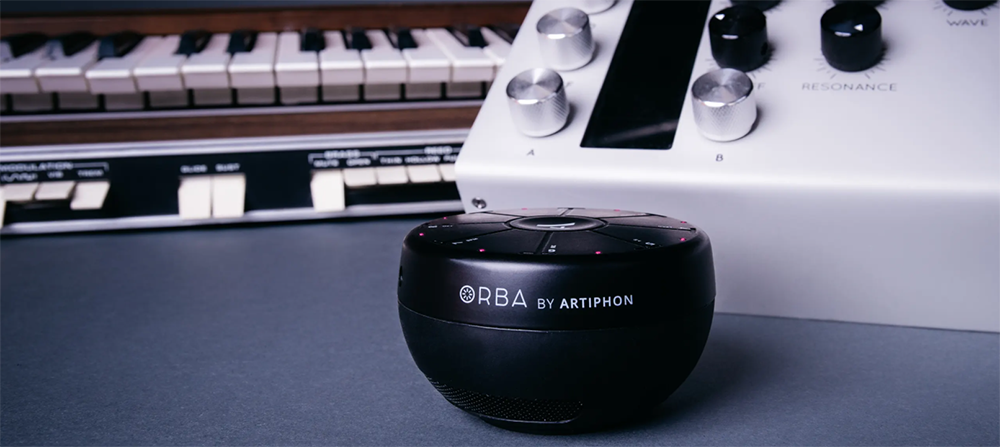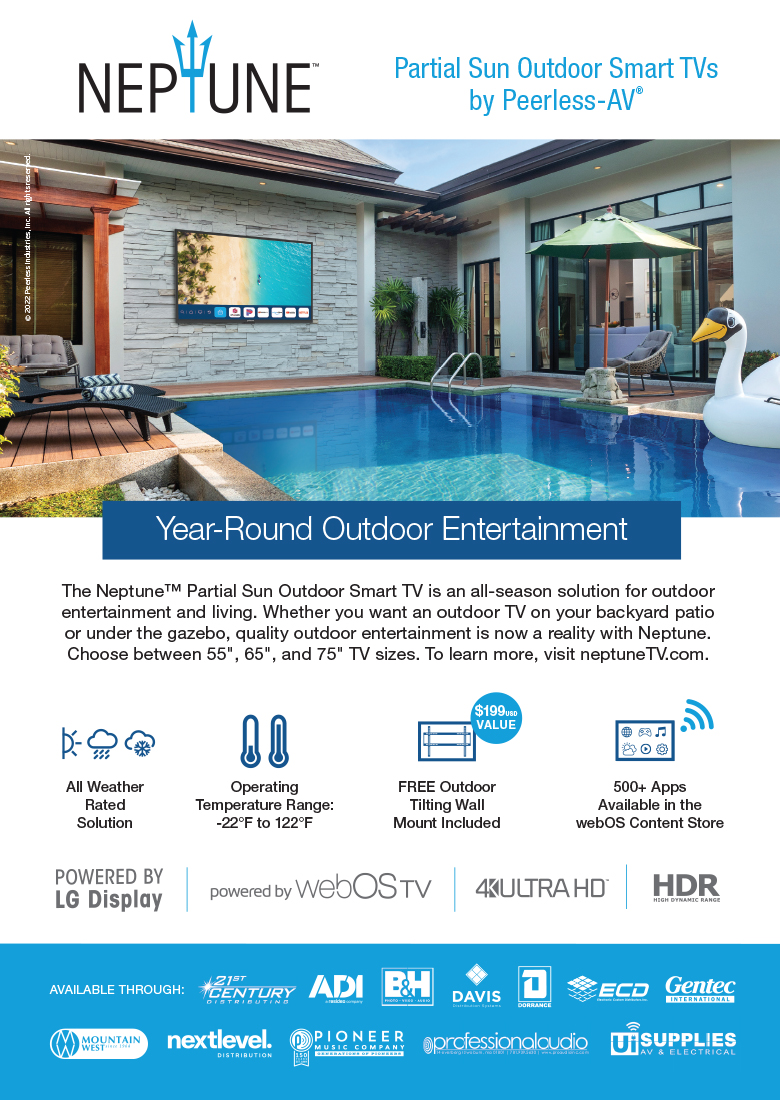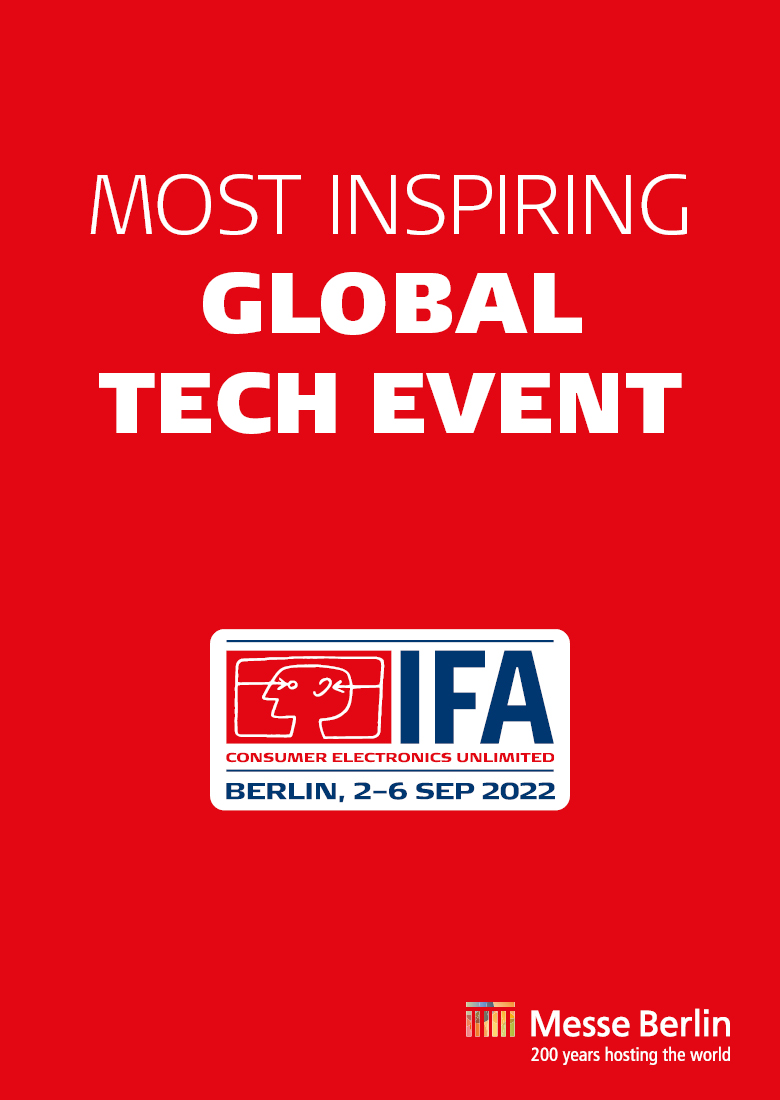This issue’s cover story focuses on the proliferation of the new 5G standard and what that means for retailers. Is it time to adjust our expectations on 5G, or does it still carry the potential to change the way we interact with technology and the world around us? Plus, doing business in Mexico, electrifying delivery services, and the best all-in-one computers for creative work.

A Diverse & Celebratory
5G Summer
Summer is my favorite time of year. I love New York City, and what it offers; everyone is outside with their children and pets. The city is full of life. And this summer is going to be incredibly special, since we are starting to get back to normalcy, and there is a reason to have fun and celebrate. Along with getting outside more often, our connected products in our outdoor spaces are important, so that we can remain connected, and ready to rock. It is also so important that we have access to 5G in our cities and spaces to get the most out of our everyday lives.
With the rise in popularity of outdoor TVs, Quest 2, our iPads, wireless speakers and earbuds, our smartphones and more, 5G has become ever more important to get the full life experience. I am even starting to have 6G conversations with industry executives, and that will be a great new way of connectivity soon. It’s exciting to finally see the fruits of all our connected products.
In line with the theme of 5G and outdoor products, our June issue looks at the best action cams and outdoor appliances. And yes, some of these appliances are connected as well. We also look at the NY Auto Show. I am impressed with the amount of car commercials that show off EVs now. It is amazing.
As we are an international company, we also cover in this issue the IFA 2022 Global Press Conference and the exciting news about our global electronics show taking place in Berlin in September 2022. Our Senior Editor, Sam Hitt, also recently visited Mexico City, and provides a look at retailers there, and how business is done with our neighbor to the south.
Carrying through with our 5G theme, we also look at the indoors with the article, “Broadband Access for Everyone: New Generation of Services Coming,” and our coverage of “What the Evolution of Streaming Means for Smart TVs.” Both will be valuable in providing insights into how we get content in the home, and how fast.
Finally, with Juneteenth approaching, I am thrilled to announce our upcoming second annual “Black Leaders in Consumer Tech” program. This is your chance to recognize great people in your companies and organizations; we want to hear from you. Please nominate your team members at https://www.surveymonkey.com/r/7SW2XMC The last day to nominate your notable talent is June 3rd.
As always, any comments and/or questions, please contact me at tmonteleone@ctlab.media – our great team would love to hear from you!
Tony Monteleone,
Group Publisher of CT Lab Global Media

A WORD FROM OUR EDITOR IN CHIEF
E-Mobility:
it’s not just for Kids

In a sign of just how much times have changed on the automotive front, the recent New York Auto Show (NYAS) in April was chock full of new electric vehicles (EV), electric delivery concepts, utility company exhibitors such as Con Edison, and the first-ever Micro Mobility Expo & Test Track. There were so few traditional gasoline-powered cars that the show seemed more like an e-mobility show than a car show.
Even just the presence of these types of products at this event makes people pause and say, ‘Wow, this is really big,’” says Ryan McNamara, vice president of sales at Jetson, which was exhibiting its line of affordable e-scooters that start at $399 and are sold at big-box retailers such as Walmart and Target. “Not everyone who comes here has the money to buy a car, but they might have the money to buy something in the e-mobility space.” Jetson had a 66-percent-per-unit market share in the mass retail space for 2021, according to McNamara, but this is the first bonafide car show the company has attended. The company usually goes to CES in January and to Outdoor Retailer in the summer.
The places where e-scooter and e-bike companies show up will likely expand, too, since the global market is expected to grow from $40.16 billion this year to $92.19 billion by the end of the decade, according to Fortune Business Insights. “We have riders from the age of 12 to over 65 – kids, moms, dads, grandparents – it’s a much wider, mass-appeal audience than people think,” says McNamara. “And this period of fast growth came over the past couple of years, when almost no one was traveling to work.” Indeed, Julian Fernau, who runs the e-bike e-tailer Fluidfreeride and is the subject of our Retail on the Run Q&A on page 40, says that his predominant consumer is among thirty-something males.
The use cases for e-bikes and e-scooters go beyond what we might typically consider. The fold-up category is hot in both e-scooters and e-bikes. One of the exhibitors at the Micro Mobility Expo was Jupiter Bikes, which makes folding e-bikes exclusively. This is not the first automotive event for the company, however; it regularly attends exotic car shows such as the Festival of Speed, and even RV and pilot shows. “Exotic car owners just love the next cool thing, but yacht owners also love this – the carry bags are PVC-coated nylon, which protects the bikes from saltwater air,” says Jupiter Bikes President Rob Daniels. “They’re extremely lightweight, so you just pull up to the dock, takethese out, and ride around the island. The Discovery X5 is only 40 pounds, which makes it popular with pilots, since weight is a big issue with flying.”
On a final note, this is my last issue as Editor in Chief of Dealerscope. It’s been a lot of fun to cover the CE and appliance retail spaces over the past 14 months and 15 issues of the magazine, not to mention the website and podcasts, but I’m also excited to move on to the next big thing, which you can find out all about by connecting with me on LinkedIn. All that said, I will likely continue as an occasional contributor to Dealerscope, so please stay in touch.
Taking the reins starting with the July 2022 issue will be Connected Design Chief Editor Erinn Loucks, who will be serving as Editor in Chief of both Dealerscope and Connected Design moving forward. Please join me in congratulating her on this exciting new role.

Tom Samiljan

CE RETAIL TECHNOLOGY
June 2022 CE News

AR Advertising Highly Popular with Gen Z | A study conducted by Global Crowd DNA on behalf of Snap Inc. found that an astounding 92 percent of Gen Z consumers – significantly higher than their millennial counterparts – want to utilize augmented reality (AR) when shopping online. The use of AR shopping features is heavily tied to the world of social commerce, where platforms such as Instagram, Snapchat, and TikTok have all stepped in to engage consumers by creating in-app experiential marketplaces.
National eCommerce Boom Slows | Over the past year, eCommerce has been a major focal point for retailers nationwide. In Q2 of 2020, the amount of retail happening online surged a whopping four percentage points to an all-time high of 15.7 percent, according to the U.S. Census Bureau. However, while many expected a new era of eCommerce, figures by Q4 of 2021 have declined back down to 12.9 percent, which puts customer buying habits back on par with pre-pandemic trends.

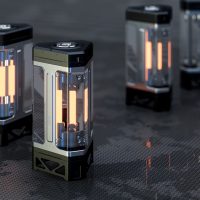
Quantum Batteries Drastically Reduce EV Charging Time | According to research from the Institute for Basic Science, quantum batteries will be able to reduce at-home charging times for electric vehicles from 10 hours to just three minutes. So, what is the difference between a quantum battery and a regular battery? Within a quantum battery, all the cells can be charged at once, while each cell in a regular battery needs to be charged individually.
Supply Chain Issues May Outlast Pandemic | The White House Council of Economic Advisors has released the annual Economic Report of the President, which warns that supply chain issues likely won’t be resolved when the pandemic ends. The report found that although modern supply chains have done an amazing job of cutting costs, they are also highly vulnerable. With climate change increasing the frequency of natural disasters, future supply chain disruptions will be inevitable.


Volkswagen Doubles Down on EV Investment in the U.S. | Volkswagen has announced that it plans to invest $7.1 billion in North America over the next five years for electric vehicle (EV) manufacturing and research. This move is part of the auto manufacturer’s broader five-year global plan announced in December that allocated $98 billion for developing more electric vehicles. VW is also planning to add 25 new electric vehicles to the North American market by 2030.
IFA Berlin Returns in September 2022 | IFA Berlin, the consumer electronics and appliance show that brings together retailers from across the globe, is back in-person for the first time since the pandemic began in 2020. After two years of heart-wrenching cancellations, the show is set to take place on September 2-6, 2022, and will be hosted by German trade fair company Messe Berlin.

APPLIANCES
Fresh Air
A look at how smart, weather-proof appliances
are changing outdoor living spaces today.
BY ERINN LOUCKS
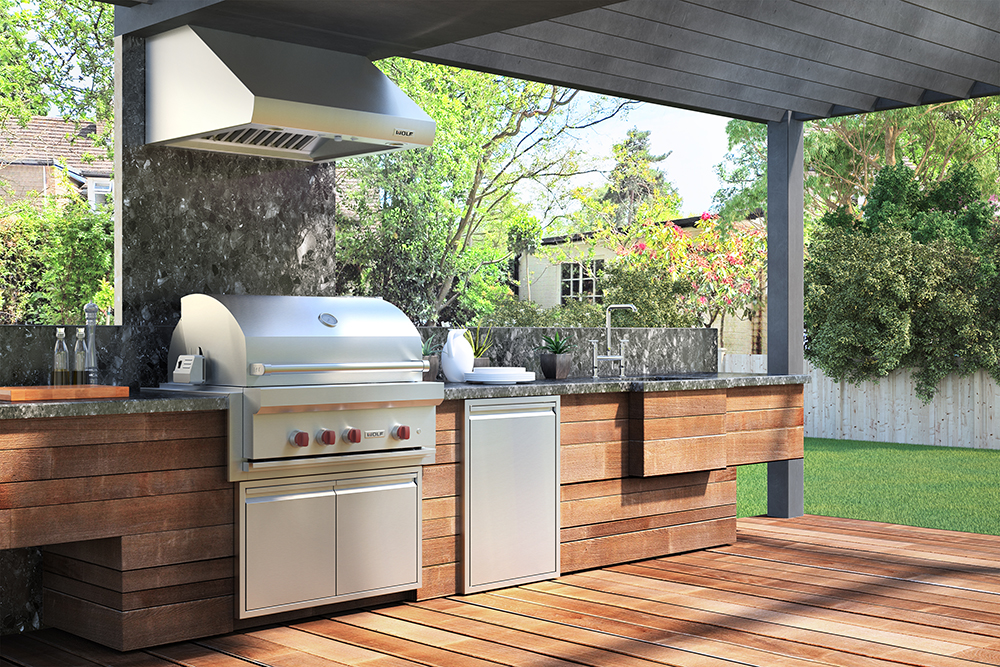
Entertaining outdoors was certainly not invented by the pandemic, but the way people now use their outside living spaces — often, and for a variety of situations — has evolved. Home prices are rising, and people are continuing to work from home in some capacity. Enjoying time together with family and friends, while also receiving the benefits of being out in nature, has never been more appreciated.
“Entertaining outside is not just a trend,” said David Pidgeon, president/CEO of Starpower. “It’s not like buying a pair of plaid pants and hoping that two years from now, plaid is still ‘in.’ Cooking and hosting outdoors is something that will continue to be enjoyable.”
What Consumers Want Outside
According to John Laing, director of appliances and outdoor at Nationwide Marketing Group, the term “outdoor appliances” applies to anything that helps a homeowner personalize their space for the best execution of cooking, cooking, serving, and overall usability. So it’s not just about having a top-notch grill or outdoor refrigerator; rather, consumers want their outdoor appliances to extend the look, feel, and function of their indoor space.
“Consumers are dedicating more time and effort into the ‘art of cooking,’” said Laing. “Both males and females have used their outdoor space to prepare foods more in the last two years than ever before. This has driven the desire to have multiple cooking apparatuses.”
It’s now common to see multiple grills with various fuel- type options like gas, lump charcoal, or electric. Reinforcing this trend, manufacturers are working on new products that give the consumer multiple options within one product. These homeowners also want those fun specialty products, like pizza ovens, kegerators, and rotisseries.
“Apart from investing in high-performing and durable appliances that are built to last, consumers are going the extra step to make their outdoor space their own, and opting to expand beyond just the grill,” said Jeff Sweet, corporate manager of product marketing at Sub-Zero Group, Inc. “From outdoor burners to warming drawers and ice makers, these extra features help consumers make the most of their outdoor spaces by adding functionality and convenience.”
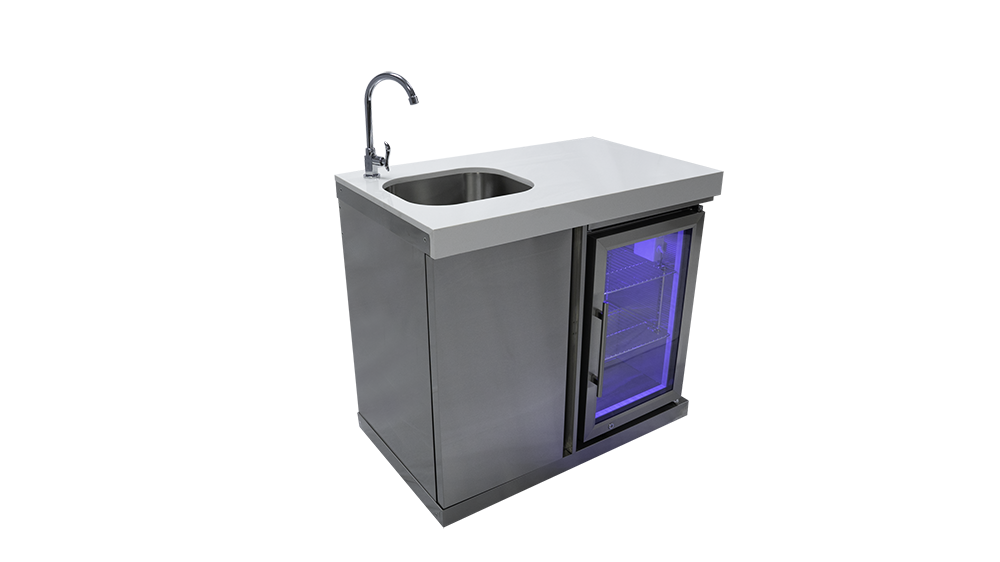
Mont Apli Beverage Center
Main Takeaway: This product boasts an outdoor-rated lockable refrigerator with blue LED lights.
Good to Know: The faucet can be hooked up to permanent house plumbing or connected to a hose pipe for each-time use.
MSRP: Retails starting at $1,799.
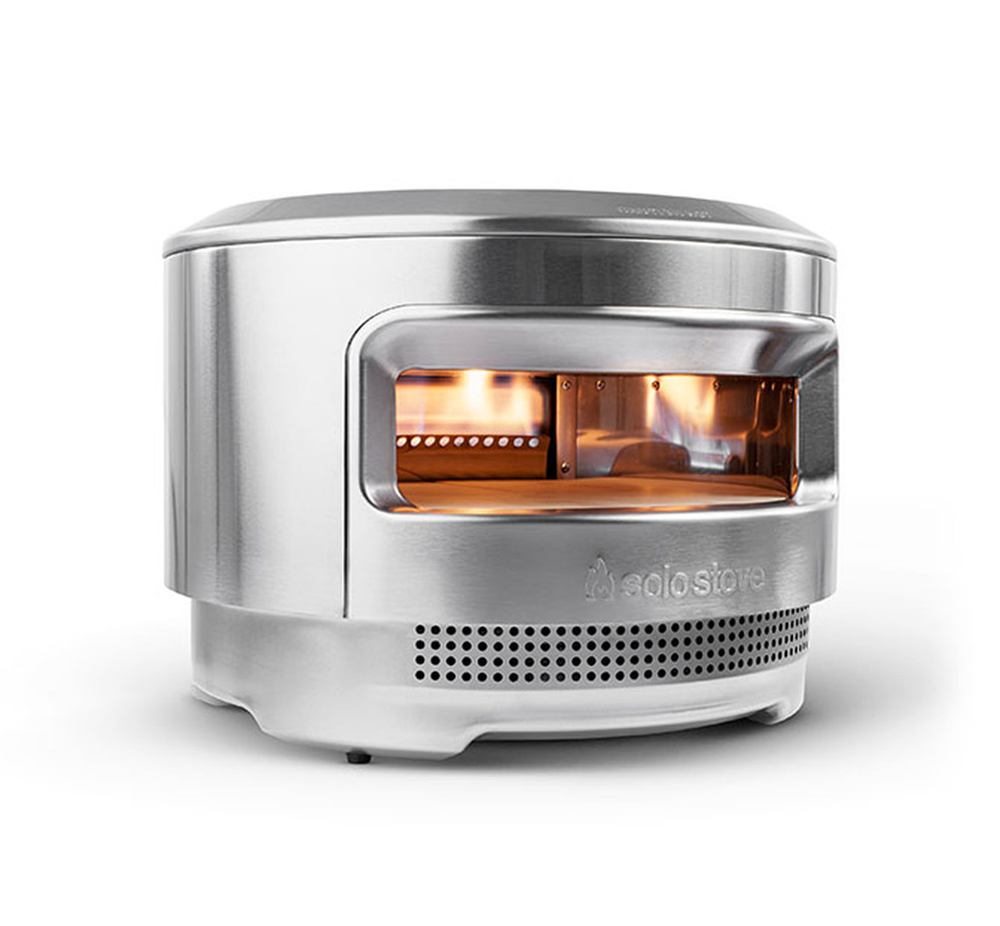
Solo Stove’s Pi Pizza Oven
Main Takeaway: Known for its simple fire pits, Solo Stove’s first pizza oven is portable and features dual fuel capacity.
Good to Know: Solo Stove’s signature airflow is used, meaning it will capture and maintain heat for the perfect pizza, which can be cooked in 90 seconds.
MSRP: $469.99.

Traeger Pro 575 Wi-Fi Pellet Grill
Main Takeaway: Boasts WiFire
Technology — which lets users monitor and control the grill from anywhere using the Traeger App — and the powerful D2 Controller maintains precise temperatures.
Good to Know: The grill also includes porcelain-coated grill grates, all-terrain wheels, and a meat probe.
MSRP: Starts at $899.99.
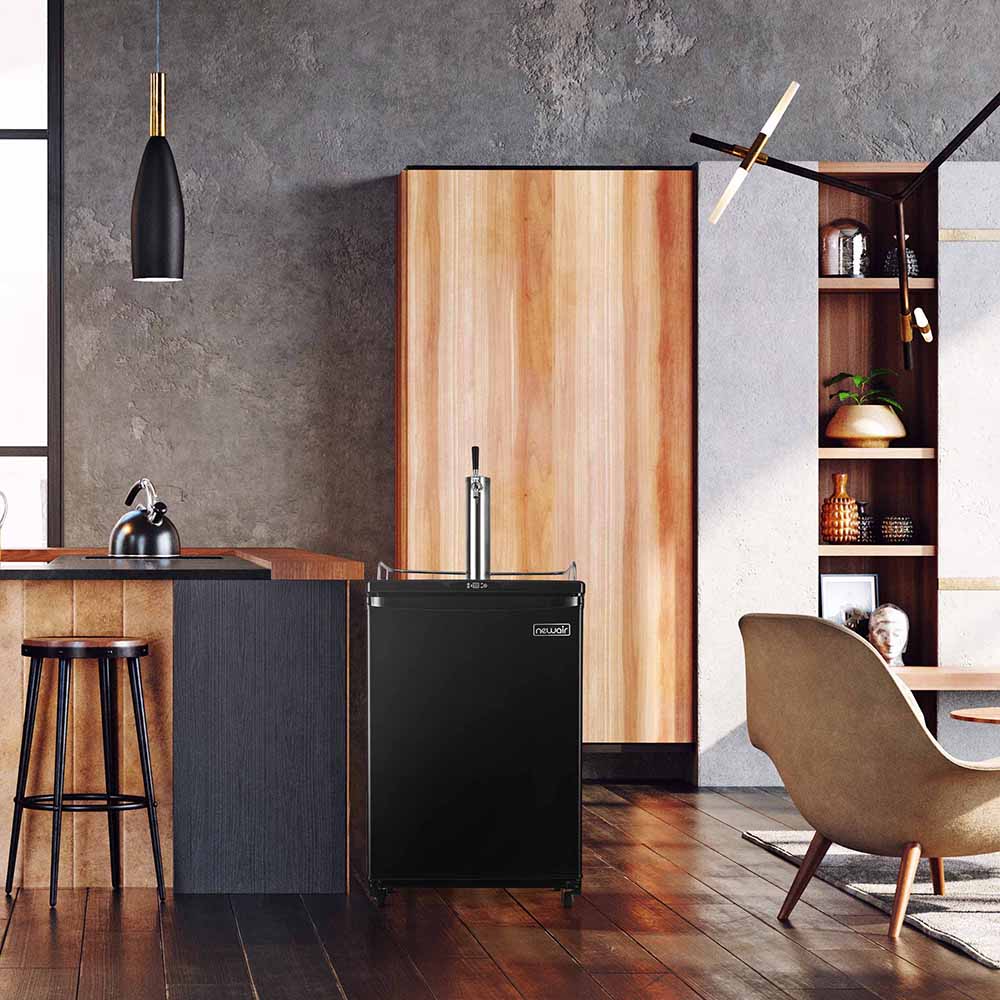
5.3 Cu. Ft. Whirlpool Electric 5-in-1 Air Fry Oven
Newair 5.8 Cu. Ft. Single Tap Kegerator
Main Takeaway: Draft beer kit included, as well as removable shelves and convertible beverage fridge
accessories.
Good to Know: This kegerator holds standard 1/2, 1/4, and 1/6 barrels in a freestanding fridge that can also be used as a beer fridge when the CO2 tank and beer lines are removed.
MSRP: Starts at $1,199.99.
Driving Technology into Outdoor Spaces
The outdoor kitchen has evolved into an extension of the indoor kitchen, so much of what is included inside is seeping outside. That also includes technology, for better or for worse.
“Technology is catching on slowly,” said Pidgeon. “In indoor appliances, tech that was announced in 2017 is just now taking effect. I think you’ll see the same type of rollout in outdoor appliances.”
The main problem with this slow adoption is the supply chain issues, which might contribute to the delay in consumers buying connected outdoor appliances. However, manufacturers are still offering tech in appliances where it truly matters.
“The best use of technology has come with the advent of the pellet grill,” said Laing. “While pellet grills have been around for more than 30 years, it wasn’t until recently that manufacturers have incorporated smart tech.”
All leading brands in this category now provide the ability to cook, monitor, and adjust grills from afar, which is helpful in long, slow barbecues and roasts. It also simplifies the process and therefore opens up the playing field for a larger variety of consumers to take on the challenge of being the neighborhood pitmaster.
“People are planning their outdoors differently because of delays in shipments and supplies, so you want to get a customer committed to an outdoor space early on,” said Pidgeon. “They are taking their outside spaces seriously.”
SMART HOME
Broadband Access for Everyone
A new generation of services is coming.
By Elizabeth Parks, President & CMO, Parks Associates
Consumers’ dependency on good, reliable, and speedy broadband service cannot be overstated. In various respects, broadband access has become essential to people’s lives — it’s a key to modern living. Broadband access is critical for providing entertainment, communications, contact to vital services, and education services. Reliable and accessible broadband services drive benefits that enhance the individual’s quality of life in so many ways.
Faster available broadband speeds have come online for most individuals across the United States. Simultaneously, many consumers may not adequately understand the advantages of faster speeds, since their existing router isn’t managing the distribution of Wi-Fi coverage efficiently. The benefits of faster broadband speeds should not be difficult for service providers to communicate to consumers. After all, different in-home usage models (e.g., video streaming, gaming, productivity applications, etc.) can wreak havoc with the needs of different people living under the same roof. What’s more, the varied construction of both new and legacy homes, coupled with the rising number of Wi-Fi-connected IoT devices, often creates a frustrating broadband experience in many households.
Wi-Fi challenges in the typical home are many.
Cybersecurity threats, mainly hacking, have become commonplace and are often not identified until a breach occurs. Once restricted to businesses, schools, healthcare entities, and government agencies, ransomware attacks can occur at the consumer level. With so many connected devices in U.S. broadband households, unsecured IoT devices with poor default password security protocols have exacerbated the situation. The current landscape, coupled with dramatic shifts in remote work and learning, offers significant and compelling business opportunities for service providers.
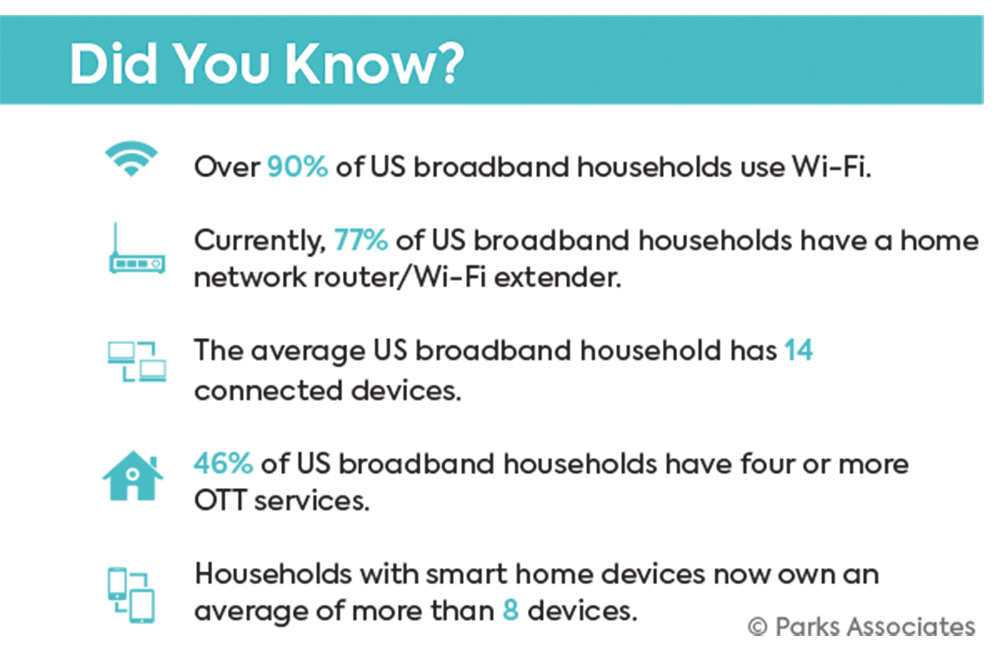
Contributing to the broadband messaging challenge has been a lack of urgency from some technology companies, particularly streaming services, to encourage faster broadband speeds, and from government and industry players to update the definition of broadband speeds. Most industry experts characterize the 2015 Federal Communications Commission (FCC) “definition” of broadband as insufficient and nearsighted. This statement by the FCC defined high-speed broadband as download speeds up to 25 megabits per second and upload speeds of up to 3 megabits per second (25/3 Mbps). The technical definition of broadband matters because it serves as the Federal government goal, which certifies that affordable, high-speed broadband is obtainable to the bulk of the population.
Parks Associates estimated that 111 million U.S. households (89 percent of the entire household market) will have some level of broadband access by year-end 2021. While this represents the vast majority of American households, there are still 11 percent of households (or about 13 million homes) that don’t have any broadband access, a situation particularly dire in rural localities and communities. This “have nots” segment of unconnected (or “under” connected) households is disproportionately older, more rural, and less educated with lower income levels compared to fully connected households. Some states are making significant infrastructure investments in rural areas to improve broadband speeds.
This coverage gap has persisted despite broadband providers reporting a breakout year in terms of new residential and small business subscriptions. As per Parks Associates’ estimates, U.S. broadband providers added 5.2M residential and small business subscribers during 2020, and an additional 1.6M in the first quarter of 2021. Of growing concern is the aging legacy DSL and even dial-up infrastructure still common throughout the U.S., which has been largely ignored in favor of higher-speed fiber deployments. However, fiber is not profitable in many lower-density locations, or in locations that would require considerable effort to trench and run new lines.
New companies and new approaches to Internet access at home have arisen to help solve the coverage gap. Solutions range from ambitious low Earth orbit satellite constellations such as Space X’s StarLink, which targets rural areas, to wireless Internet service providers such as Boston-based Starry. Starry is making use of microwave backhaul and beamforming technology in order to offer high-quality and high-speed services. MNOs, such as T-Mobile US, are using their mobile networks to power fixed hotspots in consumers’ homes. A new breed of small ISPs that specifically targets the MDU space is also emerging – installing equipment and running connections between buildings and larger networks, but without necessarily owning substantial infrastructure of its own.
This article is an excerpt from the research firm’s whitepaper The Disruptive Potential of Managed Wi-Fi. To learn more about optimization in the home broadband experience, please visit www.ParksAssociates.com.

UNBOXED
Affordable Music Production
on the Go
Hands on with the Artiphon Orba
By BRENDA THELUSCA
Musical technology has been on the rise in the consumer retail industry and now people don’t even need to be able to play instruments if they want to produce a song. But sometimes, complicated music production or recording software like Audacity or Garage Band can be overwhelming and expensive to someone just interested in making music. That’s where Orba by Artiphon excels. It is a small device that can be held in your hand, and you can produce music without a studio. This device also has a broader audience than music professionals because it is simple enough to be used by a regular consumer.

What It Is
The Orba is a circular music production device that is a MIDI controller and synthesizer all in one. The MIDI controller allows users to change what kind of instruments and sounds the Orba can play. Most MIDI controllers are in the form of a keyboard, which has to be linked to a computer to have the notes and melody recorded, but with the Orba, you can make music outside of a studio. Inspiration can come from anywhere, and the Orba’s compact size enables users to record the melody or tune they have in their heads before the ideas are forgotten. Meanwhile, the synthesizer in the device loops the notes after you record them, so you can layer on more notes until you are satisfied with the melody.
How It Works
When I first received my Orba package in the mail, my first thought was “Wow, it’s so small and light.” Since it is a musical device with speakers built in, I expected it to be a little heavy, but its lightweight design makes it more travel-friendly. Users can connect their Orba to devices through Bluetooth, and if the device runs out of battery, it can still be used while charging. It works with Mac and Windows and has a 1/8-inch headphone jack if you want to connect headphones or amps. The device interface has an “A” button in the center, and is separated into eight musical pads that have different notes. My favorite feature about the Orba is that it is flexible when it comes to its sound range, and the pads change sounds depending on what mode it is set to.
There are four modes to choose from: Drum, Bass, Chord, and Lead. These modes can be changed by tapping the A button to go from one mode to the next, or holding down the A button and selecting the desired mode directly if you don’t want to cycle through the four modes. This can be helpful when you are recording so you can time your mode change to fit the beat. Drum mode has different sounds for each part of a drum kit so there could be kick drums, snare drums, cymbals, and tom drums. Bass mode plays notes from the bass clef, Chord mode turns each musical pad into a set of notes, and Lead mode gives a higher note range that people can use for melodies. I appreciated that there were only four modes to choose from because having a wider variety on the device can become overwhelming for people who are new to music production and only know basic music terminology.
Another extra feature is that effects can be added to each note through gestures when playing a certain note. If you want a vibrato effect on your melody, you can wiggle your finger back and forth while tapping on the note. The vibrato effect makes the note vibrate, which gives a futuristic sound and is reminiscent of sci-fi movie soundtracks. The tilt gesture reminds me of them as well because the note can slide down or up depending on what direction the device is tilted in. When you tap the side of the Orba in drum mode, you can add a clap sound effect. If none of the preset sounds are what you need for your creative project, then the Orba app is your new best friend.
The app is free and has a wider selection of different instruments and tones that you can select. Also, other users of the Orba community can upload the sounds they have made, which can give people inspiration on how to create more unique sounds. Artiphon has its own SoundCloud account filled with songs it has made on the Orba.
Bottom Line
When it comes to usage, I believe anyone could use a device like Orba to make royalty-free music for their creative projects. For people who want to write songs but can’t always be in a studio or afford the session price, the Orba is a good alternative. Music studios can charge from $50 to $500 an hour to use the studio or record songs. If users decide to produce music at home, they will also have to shell out large sums; synthesizers like the Korg Minilogue XD 4-voice Analog Synthesizer Module can cost more than $500. These costly prices can be avoided because the Orba has a retail price of $99.99 and customers can get a free cover sleeve with their order if they sign up with their email. If consumers are interested in music production, then they should consider purchasing an Orba. It’s a good beginner’s step to take before investing in more professional musical equipment.
Overall, I enjoyed my experience with using the Orba, even if my music skills aren’t at a professional level. I spent hours testing out different sounds until I found a melody that I enjoyed. At first, I was worried that I wouldn’t have enough musical knowledge to know how to operate the Orba, but the video course on the website was easy to follow, and I had no problems making a melody. The app is another powerful asset because the other sound choices can range from ’80s music to relaxing lo-fi beats, and it will save any beats that you make. So, if you forget how you made the beat to a certain song, you can play it back to yourself and see which key and tempo you used to achieve that melody. I strongly encourage anyone who buys this device to watch the video course because it is entertaining to watch; each video is less than three minutes, and best of all, it’s free. Even though I am not in the profession of making music, I will continue to experiment with my Orba in the future to see what melodies I can create.
SUMMARY:
The Orba is a circular tap-, slide-, and wave-gesture-controlled music production device that is a MIDI controller, looper, and synthesizer all in one.
An accompanying app provides guidance, the ability to save your work, and additional music samples.
For people who want to write songs but can’t always be in a studio or afford the session price, the Orba is a good alternative.
Price: $99.99
Where to Buy It: artiphon.com

IFA NEWS
IFA Will Be Back in Person, ‘Without Compromise’
It will also be available online, though in limited form, per the conference organizers in a press conference.
By STEPHEN SILVER
IFA, the annual event in Berlin that is the largest electronics trade show in Europe, took place in scaled-down virtual form in 2020, and was canceled altogether, due to the Delta variant, in 2021. But this September, IFA will return in its usual form.
That’s according to Jens Heithecker, executive vice president of Messe Berlin Group and IFA’s executive director, in a digital press conference that took place on the morning of April 27.
“IFA 2022 is going ahead — full size, real life, as a hands-on on-location event without compromise,” Heithecker said in the press conference. The event will take place Sept. 2-6 at the Messe Berlin Exhibition Grounds in Berlin.

Christiano Amon, the Qualcomm president and CEO, will deliver the opening keynote at IFA 2022.
“For both exhibitors and visitors, the risk of a sudden new lockdown was simply too big,” he said of the 2021 cancellation. “But now, it’s 2022, and the situation has changed significantly. I’m certain we all feel the same- it’s been a tough two and a half years, for everyone. Our world has suffered. We have seen illness and death, economic uncertainty, lost livelihoods, endless lockdowns.”
Now, however, he continued, “it’s time to reconnect, interact, collaborate, and co-innovate — to rekindle friendships and partnerships, to meet people face to face, not as flat images on the screen. It is time for a return to normal —though, let’s be clear, it’s not the normal of 2019.”
All major COVID-19 restrictions have been lifted in Germany. Heithecker said that 15 of the top 20 exhibitors, thus far, have agreed to return to this year’s show, “nearly all of them at the same scale as 2019.” He also reported “really strong bookings across the board” for booths.
Heithecker said he is confident that the show can go ahead as normal, citing the lack of restrictions in Germany and that at least one major event has taken place at Messe Berlin in recent weeks without incident or restrictions.
“IFA is a key platform for our industry,” Heithecker added. “It’s where they can reconnect with friends. It’s where they can be reassured that products were flowing. And that’s why retailers tell me, they expect every single brand and manufacturer that they work with to be here in Berlin.”
Heithecker also said that “all the big retail groups” have confirmed that they will attend IFA in Berlin.
IFA also announced that Christiano Amon, the Qualcomm president and CEO, will deliver the opening keynote at the event.
“I’m looking forward to sharing how Qualcomm is driving the pace of innovation for 5G and AI across devices and experiences,” Amon said in a brief pre-taped message in the press conference.
More keynotes will be announced “in due course,” Heithecker said.
Heithecker also discussed the effect that the pandemic had on the industry since 2020.
“The pandemic created a boom for technology products,” he said, adding that “technology literally saved lives” and that “it helped us keep our sanity and wellness in difficult times.” He was adamant, as well, that while virtual meetings have been a help, it’s not the same as meeting and seeing products in person.
IFA will also have an “extensive virtual program,” for those not able to travel to Berlin.
“We have learned what works and what doesn’t work when it comes to virtual events,” he said, adding that there wouldn’t be a “full online replication” of all products, but that press conferences and keynotes will be included. Heithecker also stated that it won’t be a full Metaverse experience.
“Virtual experiences are only complementing real life, they’re not replacing it,” Heithecker said. “And that’s why there’s simply nothing that compares to the real experience, being at a trade show, coming to IFA Berlin, walking the halls and the fulcrum at Messe Berlin, and experiencing the future today.”
Heithecker added that topics that will be covered at IFA in September will include AI, 5G, Internet of Things, robotics, digital health, and immersive experiences. Challenges related to the supply chain are likely to also come up as a topic at the event.
Also delivering a message was Paul Gray of Omdia, who enumerated some overall industry changes. This included a “shift towards providing better support for gaming,” a shift from gaming consoles towards online, continuing growth of home cinema, the continuing shift to OLED TVs and Samsung’s new QD-OLED format, and the entry by new players, including Amazon, to the TV market.
GFK’s Norbert Herzog also shared some trends, including a rise in the cost of logistics, the new Omicron surge in China affecting supply chains, and complications arising from the Russian invasion of Ukraine.
Later in the day, Heithecker and Dirk Koslowski, the IFA director, participated in a Q&A session with North American media.
“To talk about the challenges and opportunities the industry [has] the moment,” Heithecker said of IFA’s approach. “The challenges are crystal clear. It’s about supply chain, it’s about [Ukraine], it’s about the consumer demand and what will happen to the moods of the consumer in the next time.”
“There’s a huge demand by retailers,” he added. “Whenever we spoke to retailers in the last couple of weeks, they asked us to help to bring the boom of new product, of innovation… to the consumers, to the markets, this holiday season.”
Koslowski said that exhibitors have to “figure out how their booth will look like,” while some might not have enough new products ready to show, due to chip and other shortages. “That’s a huge challenge, for all of our clients in general.”
The IFA executives shared that they do not plan, at the moment, to have COVID restrictions in place for the event, as the recent Messe Berlin events have not had mask requirements. Some attendees, however, will face restrictions on their own end when traveling from other countries.
“Safety is our priority,” Heithecker said. “It’s our priority for our exhibitors, for our attendees, for visitors, and for ourselves.”
Koslowski added that the venues are very large at Messe Berlin.
Heithecker, in response to another question, stated that while very few Russian exhibitors took part in IFA in the past, the organization will comply with German sanctions, and forbid participation from both Russia and Belarus, barring some change in the imposed sanctions.
“We follow the law, and we follow the sanctions,” he said.
Heithecker did not give an outright number of how many exhibitors or participants will take part in the event, although he said that those numbers are not typically shared months prior to the show.
And in response to a question from Dealerscope about the day-to-day experience for a virtual version of IFA, Heithecker responded that “nothing can replace the face-to-face meeting.” That’s because, in part, IFA does not believe that virtual attendees will spend as much time on the platform as they would if attending in person.
The specific platform that will be used for the online version of IFA was also not specified, but more details will emerge in the coming weeks. From the sound of everything so far, the show seems to be gearing up to be better as an in-person event rather than a virtual event, but by September, that’s also likely what most attendees will want anyway.
SUMMARY:

- As announced at the IFA Global Press Conference in late April, IFA will return as a full-scale, in-person event in Berlin Sept. 2-6, 2022.
- Conference organizers do not plan to have any COVID restrictions in place, unless the situation changes and it is once again required by law.
- There will be a concurrent online version of the conference for keynotes and product announcements, but the bulk of the show is intended to be an in-person experience.

E-COMMERCE
Tapping the Power
of Personalization
A playbook for savvy e-commerce retailers.
BY LLOYD WOOD
The latest trend data from GfK Consumer Life shows that more than half of global consumers like the idea of technology that “knows” them — can make recommendations based on their wants and needs. At a time when concerns about privacy are also on the rise, why would so many shoppers embrace algorithms and other targeting techniques – sometimes labeled as intrusive and even “creepy”?
The answer may lie in another data point — that over one quarter of consumers say they “feel overwhelmed with information” when making a major purchase. While today’s shoppers may be the savviest ever, with dozens of ways to research and buy products, this access can come at a price — a sense of overload for people who already have too much to think about.
Personalization of e-commerce content can save consumers precious time and annoying hassles — and it has huge upsides for sellers. Merchant World reports that nearly 35 percent of Amazon’s sales come from personalized shopping recommendations based on a user’s past purchases. But what does it take to offer a truly personalized shopping experience online? Are e-commerce sites ready to deliver all of the convenience that buyers crave?
“…over one quarter of consumers say they ‘feel overwhelmed with information’ when making a major purchase.”
From Simple to Sophisticated
According to Forrester, 53 percent of digital experience delivery professionals say that they lack the right technology to personalize experiences. Online retailers who fall into this category will find themselves at a severe competitive disadvantage in the modern e-commerce space. But there is good news: The many flavors of personalization give retailers a host of options, with some being elaborate and others fairly simple to execute.
E-commerce personalization mainly refers to the curated display of online content based on past customer data to ease the purchase journey. The data used may include shopper demographics, purchase intent, browsing history, preferences, previous purchases, cart history, and device usage. All of these can provide insights that simplify the shopper’s experience and possibly boost retailer revenue, sometimes with a minimum of effort.
Some of the most common personalization tools are based on a user’s purchase history. We often see this in personalized home pages when we do our online shopping, where products we have viewed or purchased show up on the landing pages we click on. This flavor of personalization is easiest to implement.
Utilizing purchase history can be as simple as showing previous purchases, related products, merchandised products, or product recommendations based on algorithms. For example, when a printer is purchased, recommendations would be ink, paper, and extended warranties.
The difficulty comes in with associating products on a SKU or series basis. This is where a highly normalized data set with accessories can be invaluable to a reseller. A normalized data set has product data details in a uniform order for all the products within a category, regardless of brand. Data providers such as GfK offer highly normalized data sets with accessories that can be used for this purpose.
Channel partners can manually create these relationships, of course, but the task is large; a single product can have dozens or more accessories — simply showing these add-ons increases sales and conversions. The ability to leverage connections between products is the power to drive revenue.
A Curated Option
Purchase and search history by curated preferences is an extension of purchase-based personalization. Preferences can be defined by direct questions to buyers or by deductions made from purchase and search history. A deduction would be that a buyer from a legal office who purchases a printer would be interested in buying legal-sized paper and labels. Although not a direct accessory to the printer, paper selections displayed during a printer buyer’s search would likely increase sales.
Deductions can also be made based on other related consumer purchases in specific categories and choices that they make in tandem. For example, law office customers may purchase many of the same items — creating a legal customer profile. Using specific types of profiles can take data in from many customers in similar businesses and create useful insights for resellers. The number of potential profiles is endless, and every search or purchase adds to the data set.
“E-commerce personalization mainly refers to the curated display of online content based on past customer data to ease the purchase journey.”
Sophistication At Scale
On the more sophisticated end of personalization is Amazon, which records and leverages every move made by a shopper. Amazon maps these actions carefully, studies the decisions made or not made, and integrates “people who viewed this bought that” data. The Amazon network data drives proprietary algorithms that dynamically provide shoppers a very curated journey based on their seemingly “casual” web interactions. Examples can be as simple as “buyers of running shoes tend to buy health food” or much more complex.
Companies like Amazon and Walmart amass huge amounts of data and can run what are known as A:B tests. The same data or products are shown to a specific segment of buyers, and then a variable is introduced, and the results tracked. Using our legal office example: Half of the buyers within a legal office profile can be offered a promotion upon making a specific search. The promotion may be for a case of legal paper as the first search result. The retailer can then track the results, and know if the average cart size increased or decreased for the trial group compared to the reference group.
Resellers of nearly all sizes can automate these A:B tests and perform many in a short amount of time. The test can be multivariate, which can speed the results, as well as the resulting changes to search or merchandising. The variables are not only product- or price-based; they can be region, by time, by external events, or even by influencers and promotions. The results can be built upon to continually optimize sales and conversions. Examples may be to show different brands that help drive margins of a case of legal paper in the example above.
The truth is that you don’t need to be Amazon to take advantage of personalization. All retailers can use similar concepts and techniques to increase sales and margins. Here are a few essential steps for your journey:
1. Establish your goals — Are you just driving revenue? Trying to grow a specific product line or category? Knowing where you want to go in the end is key.
2. Take the customer’s viewpoint — What would make your users’ site experience better? Think beyond today’s revenue — consider the loyalty and stickiness you will build through great CX (customer experience).
3. Partner with your platform provider — Big Commerce, Magento, Shopify, and WooCommerce all offer personalization options that are inexpensive and can be easy to set up.
4. Check your product data — Does it allow for product associations and relationships? Normalized product catalogs such as GfK’s provide this functionality, in addition to delivering content for millions of products.
5. Focus on continuous improvement — Once you have launched, keep checking your results and adjusting accordingly. Personalization is an iterative process, not a one-off. Think of all the ways it will benefit your business in the months and years ahead!
Today, personalization is not just for ecomm giants with deep pockets; you can do much more with less – and the first step is deciding that now is your time to make a splash with this potent tactic.
Lloyd Wood is Director of Sales at GfK Etilize, the world’s largest aggregator of content for e-commerce. He can be reached at Lloyd.wood@gfk.com
SUMMARY:
- Personalization is a powerful driver of better customer experiences –
and elevated sales. - Options for personalizing range from complex to surprisingly simple.
- Start by setting your goals and assessing the data at your disposal.
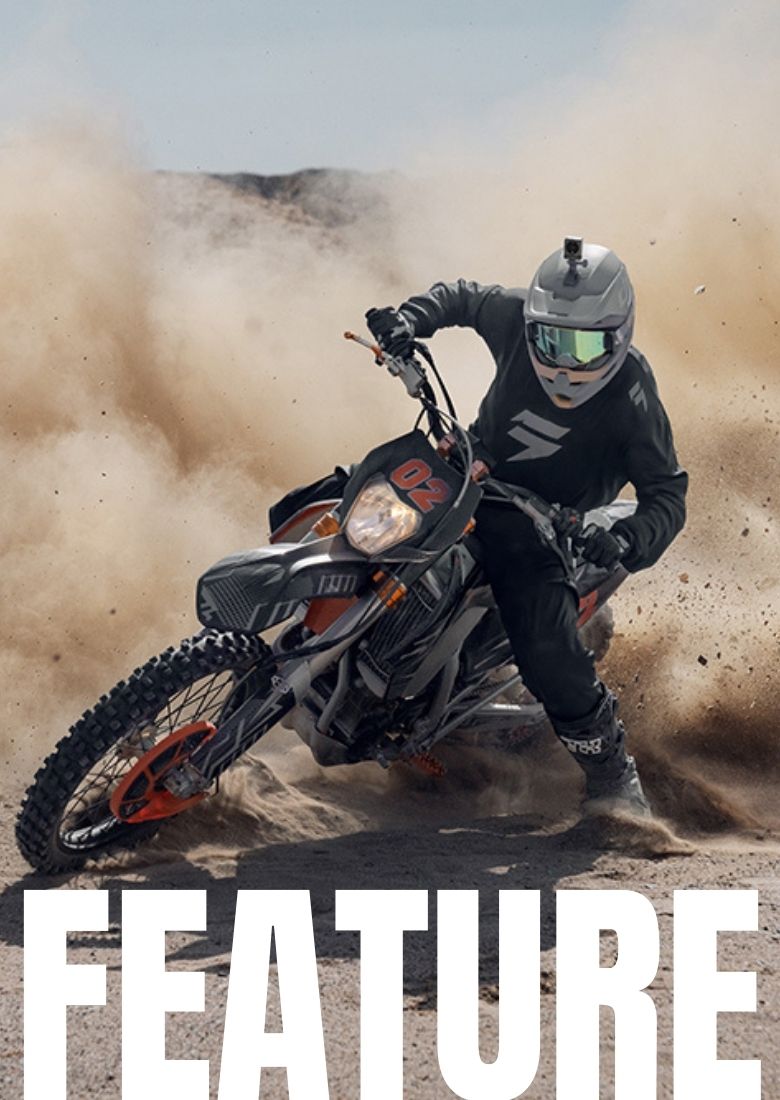
ACTION CAMS
Action Cams for Every Occasion
GoPro may still be the top player, but it has a lot of competition with different feature sets and prices. Here are the ones we like best.
BY EGON SANDERS
For the past several years, the action camera market has expanded in nearly every direction. What used to be generally considered exclusively the domain of GoPro is now filled with a wide range of offerings from many companies that offer a number of different feature sets, form factors, and price points. GoPro is still arguably the top of the pops, but the charts are now full of talent. We’ve gathered together a host of great options for various consumers and use cases.

GoPro Hero 10 Black
The latest and greatest from the oldest player in the game, GoPro’s Hero 10 Black is built on a new processor for the company. This allows for faster captures, increased resolution, and vastly improved image stabilization, using what the company calls HyperSmooth 4. It’s almost as impressive as having your camera on a gimbal, and can shoot in resolution all the way up to 5.3K, at 60 frames per second. This tenth iteration of the quintessential action camera also includes the best noise reduction yet, while video tone mapping is great for finding detail in the shadows of video, and helps extricate clean 19MP still images from recorded video. Available for $350 directly from GoPro, with a free one-year subscription ($100/year after that), which includes unlimited cloud backup plus auto uploads, and a no-questions-asked camera replacement.
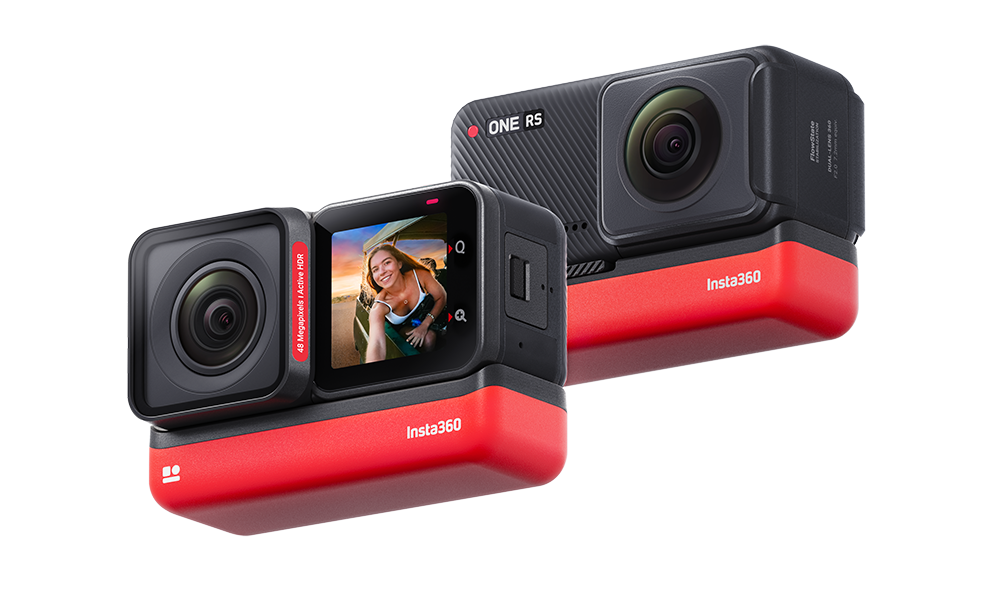
Insta360 One RS
The Insta360 One RS essentially lets you have two cameras in one: a traditional 4K camera, as well as a 360 camera for recording dynamic, immersive footage (to be viewed in VR, for instance). It can be separated into three pieces: the camera module (with the lens), the control module (with a color touchscreen), and the battery. The modular design is slick (only a tad larger than the GoPro Hero10 when put together), and the lenses can even be reversed, letting you use them in selfie mode. For the action sports crowd, the Freeze Frame feature lets you freeze the video around a point in time for a designated number of seconds, as the viewpoint changes, and then resume — adding a cool way to punctuate moments.The One RS is available in several configurations: the Twin Edition, which includes a 4K Boost Lens and 360 Lens for $549.99; the 4K Edition, with just the 4K Boost Lens for $299.99, and the 1-Inch Edition, which includes the older 1-inch camera module for $549.99.
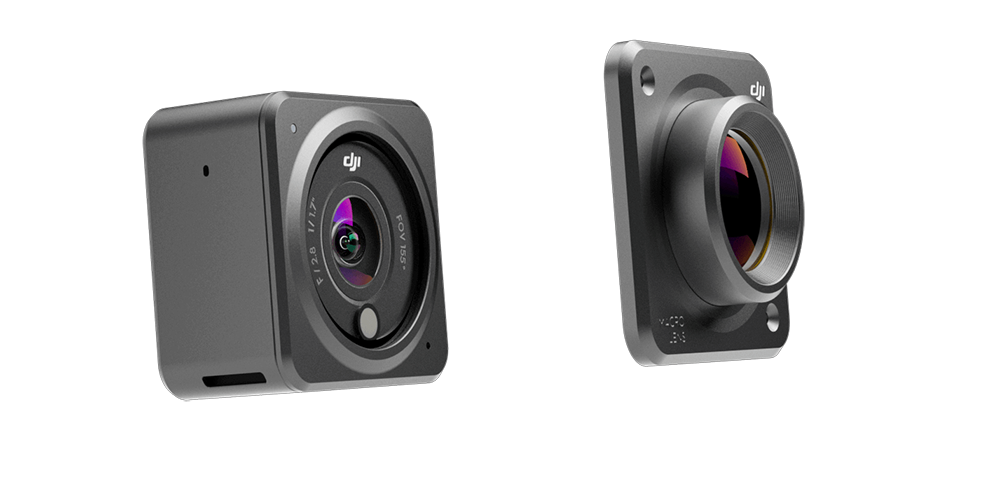
DJI Action 2 Camera
Top-tier drone maker DJI’s newest action cam — dubbed simply Action 2 — is its most compact to date. The Action 2 is fully modular, meaning that if diminutive size is essential, it can be taken apart and then used to shoot with just the tiny lens and screen alone. Assuming you can live with limited storage (32 GB) and battery (roughly 15 to 20 minutes when shooting 4K video) in this mode, this is as small as high-quality action cameras get. The flexibility doesn’t stop there; if you’re planning to use it in the water, you can throw on the underwater case. The Action 2’s built-in stabilization is complemented by a very cool feature called “horizon stabilization,” whereby your footage is kept level — even when the camera itself is tilted up to 45 degrees. The Action 2 is available for $399.99.

OCLU Cam
With a screen that’s positioned on its top surface and a svelte, low-profile body, OCLU’s design is unique in the action camera space. The shape makes it ideal for positioning it, say, beneath the peak of a helmet when riding a bicycle, or underneath a skateboard, while the position of the viewscreen on the top face of the camera is great when the device is attached to a handheld grip or mounted on your chest, giving you a clear view of the frame from above. The OCLU foregoes a touchscreen in favor of buttons for recording and navigation, and shoots 4K at 30 frames per second (fps) or, for slo-mo footage, 1080p at 120 fps. While the OCLU works with GoPro-compatible accessories, it’s also bundled with mounts for various snow, road, and water activities: a chest mount, waterproof housing, and various grips and mounts.
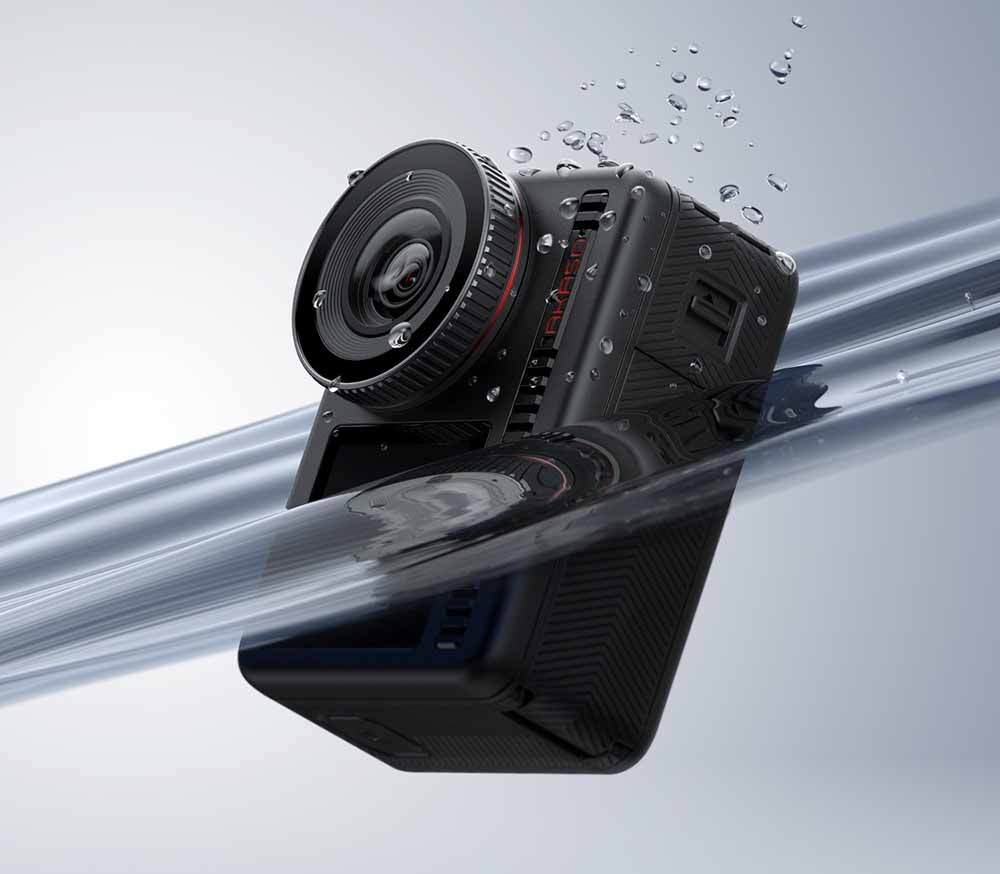
Akaso Brave 8
The current flagship from Akaso, the Brave 8 doesn’t skimp on the specs front: Its half-inch 48MP, 1.6um Quad Pixel sensor is one of the highest-quality sensors on the market. 8K time-lapse video is an interesting twist, adding impressive clarity and detail to any type of time lapse video. While its software and phone app leave something to be desired, the camera comes with several handy accessories as standard: various mounts, a case, and a remote control. It captures 4K 60fps video at up to 33 feet standard, and up to 196 feet in its waterproof case. It’s available for $279.99.
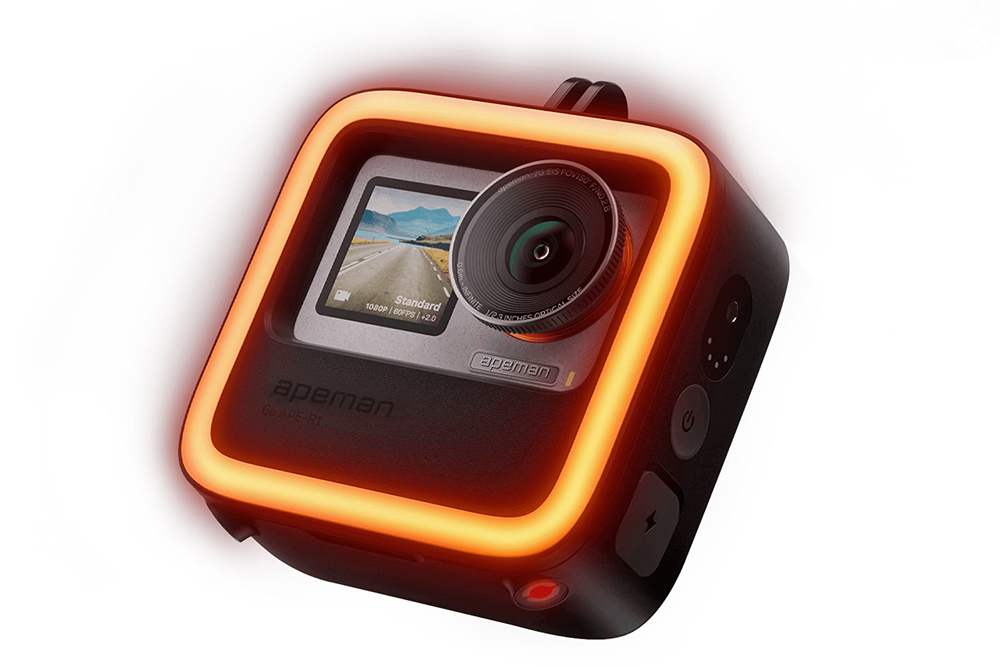
Apeman Seeker R1
While it can handle plenty of action cam duties, the Apeman Seeker is designed as a cycling camera. Mounting on the back of your bike, it streams a “virtual rearview mirror” to your phone screen, while also integrating smart taillight, brake light, and bike lane indicators. It shoots 4K video and still photos with its 12.3MP sensor, powered by a four-core 1GHz processor and six-axis electronic image stabilization. It has front and rear displays, and will run for up to 60 minutes of recording on a charge. There’s even a front-facing version that integrates a “live stats” dashboard cam, and auto-adapting headlight. Kickstarter backers were able to preorder theirs for $299, and the Seeker R1 should be available over the coming months to everyone else at a slightly higher price point.
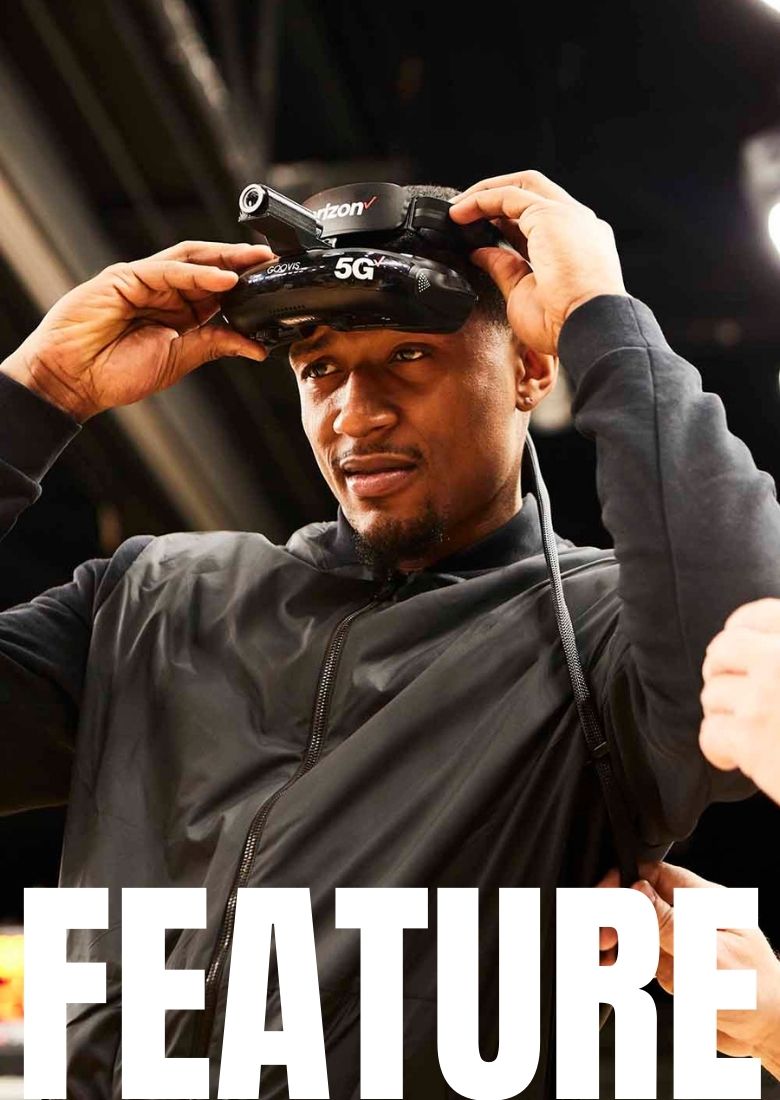
5G TECH
Riding the 5G Wave
What’s hot, what’s not, and what matters
in the high-speed wireless arena.
By JOHN R. QUAIN
The way wireless carriers touted it, 5G was going to catapult us out of the digital stone age into a renaissance era of virtual reality (VR) experiences, gaming on the go, and a veritable revolution in new services and entertainment. That hasn’t happened, and 5G wireless service is still a confusing mixture of features, standards, and still-to-come products.
So what do you tell consumers overwhelmed by the 5G din?
“We’re past the 5G novelty phase,” says Ross Rubin, founder and principal analyst at Reticle Research. “With practically all new phones supporting 5G, it has become less of a differentiating feature.”
Indeed, technology’s relentless march forward has meant that 5G subscriptions are up. By 2024, analytics company GlobalData predicts that 5G subscriptions in the U.S. will surpass 4G subscriptions. Even before that happens, it is estimated that 5G data traffic will surpass that of 4G services by next year.
Furthermore, upgrading to the faster 5G services is one reason worldwide smartphone sales grew six percent last year — even though component shortages and supply-chain issues disrupted smartphone sales in the second half of 2021. The silver lining: Analysts say because of such disruptions, there’s increased demand this year for 5G phones.
All this is happening without the impetus of a killer app that needs higher data speeds, analysts acknowledge. Although the company formerly known as Facebook is promising to step into the world of virtual reality and augmented reality with its metaverse, such products and services are very much in their infancy. So how should retailers approach the new wireless 5G standard?
“Retailers still have a role to play in helping consumers understand the benefits and setting the expectations,” says Rubin.
“All high-end smartphone launches have been 5G,” points out Jeff Moore, principal at Wave7 Research. “At the low end, it’s still a mix, with some phones still only having 4G.” So there’s plenty for retailers to sort out for customers by answering a variety of questions about 5G.

How much faster is 5G, and whose network is best?
5G or fifth-generation networks actually involve three different wireless spectrums and use a variety of techniques to boost data speeds, including employing wider channels to increase the amount of data transmitted, lower-latency techniques so there are reduced delays in responses, and the ability to connect more devices, such as smart city sensors and connected cars. Not all of these technologies have been deployed everywhere — or even in very many places. So average 5G speeds, while faster than existing 4G speeds, still have a distance to go. AT&T’s and Verizon’s average 5G speeds, for example, come in at about 50Mbps in many tests, whereas T-Mobile’s more extensive 5G network delivers an average of 150Mbps in tests.
What is millimeter-wave 5G?
Millimeter-wave 5G derives its name from the fact that it uses frequencies in the much higher 20-to-100-GHz range. It’s the first time such frequencies have been used for cell phones, and while they can deliver speeds over 3Gpbs on, say, Verizon’s “ultra wideband” network, it has very limited availability — less than three percent of some networks. “For phones that support millimeter-wave tech, it’s more of an opportunity to participate in special experiences at venues such as sports arenas,” says Rubin. “So they just need to understand that they can access significantly faster cellular service — but within a more limited area.”
What is C-Band?
“A big trend for 2022 is the launch of phones with C-band 5G,” says Moore. The newest spectrum to join the 5G arsenal are C-band networks, which are primarily from AT&T and Verizon in the U.S. using the 3.7-to-3.8-GHz portion of the radio spectrum. C-band created a stir because the FAA complained it was too close to frequencies used by older altimeters in some airplanes. However, those issues have been largely resolved. But to take advantage of C-band, there are still only a few compatible phones, including Apple’s iPhone 13, Samsung’s Galaxy S22, and Google’s Pixel 6.

The NFL’s Larry Fitzgerald tries VR over 5G.
What about fixed-wireless 5G Internet service?
Fixed-wireless 5G home Internet service is touted as an alternative to cable. The primary fixed 5G services now available are T-Mobile’s Home Internet, with average download speeds of around 100Mbps, and Verizon’s 5G Internet service, with average download speeds of around 300Mbps. There are no data caps, and the basic services cost $50 a month, with no equipment fees. But this is still a very nascent market. “While coverage is growing, it’s only a fraction of the U.S. population that has access,” says Rubin.

5G TECH
5 for 5G
While most smartphones now offer some sort of 5G support, only a few cover most of the 5G frequencies that are available. Here are the leading models.
By JOHN R. QUAIN
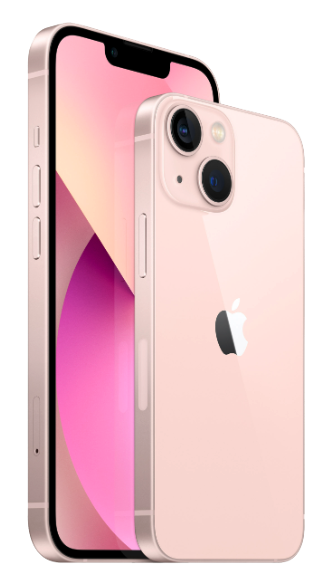
Apple iPhone 13 Pro Max,
$1,099.99
Apple’s big and bold iPhone has a 6.7-inch screen and over 12 hours of battery life. On the other hand, all that leading-edge technology, including Apple’s A15 Bionic processor, means
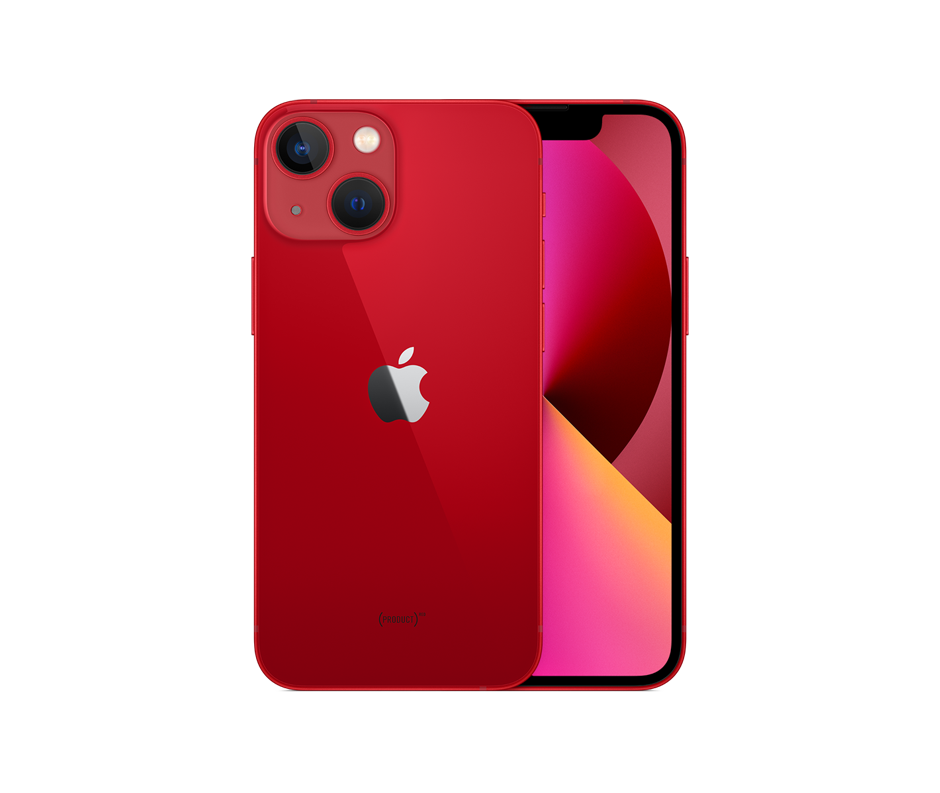
Apple iPhone 13 Mini,
$699.99
Not every customer wants a big screen — or has a big budget.
For them, there’s the iPhone 13 Mini with a 5.4-inch screen, and weighing less than five ounces. It’s a great compact smartphone that works with all the major carrier’s 5G networks. The only weakness here: battery life is only about eight and a half hours.
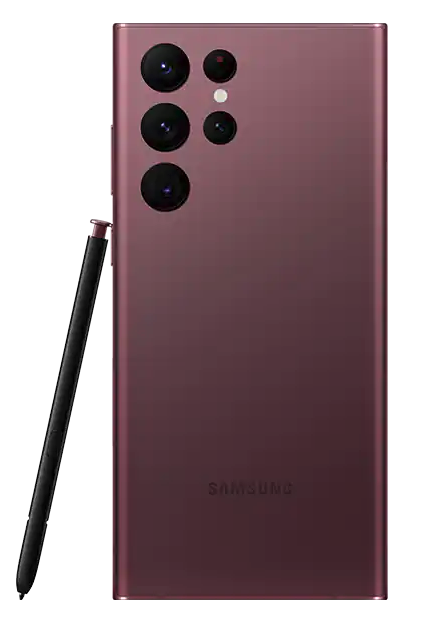
Samsung Galaxy S22
Ultra, $1,199.99
Samsung’s flagship Android-based Galaxy S22 Ultra has a big and bright 6.8-inch screen that’s clearly legible in direct sunlight, and comes with cameras that offer some of the best low-light performance available in a phone. Its battery life isn’t the best, at over 10 hours, but its 5G coverage can’t be faulted.

Google Pixel 6 Pro,
$899.00
Also bearing a large, 6.7-inch screen, Google’s top-of-the-line phone is competitively priced compared to Apple’s and Samsung’s leading models. But testers have found its battery life doesn’t match those market leaders, and that its fingerprint reader can be finicky. Nevertheless, the Pixel 6 Pro has a dedicated fan base, and like Apple’s and Samsung’s offerings, Google’s Pixel 6 covers all the 5G bases.
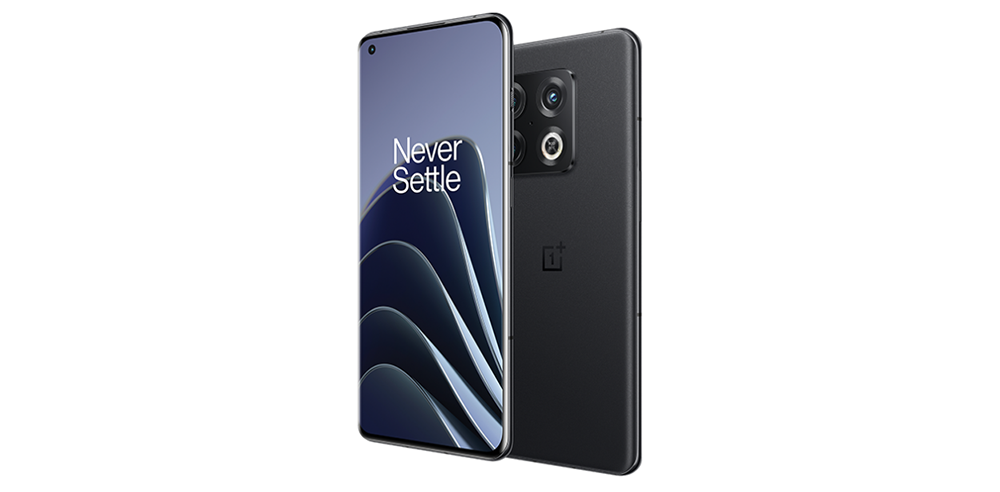
OnePlus 10 Pro 5G,
$899.00
Boasting arguably the sharpest display available, the OnePlus 10 Pro’s 6.7-inch screen is striking, and this phone delivers 12 and a half hours of battery life, besting other models costing hundreds of dollars more. Better still, it offers super-fast wireless charging that others lack. If this OnePlus phone has an Achilles heel, it’s that it doesn’t support millimeter-wave 5G services and doesn’t support AT&T services, as of this writing.

MOBILITY
Electrifying Deliveries
GM’s BrightDrop wants to cover the last mile
with its whisper-quiet e-trucks
By JOHN R. QUAIN
As I wheeled a big white-box truck around trendy Williamsburg in Brooklyn, a motor scooter suddenly zipped by, illegally swerving into the oncoming lane and then running a red light. Just then, another scooter came flying down the wrong way in a bike lane as I was about to make a turn. And finally, as I backed the truck into its berth on West Street, a diesel-powered delivery vehicle charged toward me, ignoring the backup beeps and lights.
Such stresses are all in a day’s work for a typical delivery driver in New York City, but what was different this time was that I was test-driving a new, all-electric truck designed to handle such chaos with ease. The BrightDrop EV600 is whisper quiet, with responsive handling, ergonomic design touches, and a welter of safety technology. A fully owned subsidiary of GM, BrightDrop is on a big push to deliver its all-electric trucks to retail and shipping customers this year and next.
“We’re all about the first- and last-mile delivery,” explained Brad Beauchamp, client solutions manager for BrightDrop. Beauchamp said the pandemic has changed customer demands, with more people ordering for direct home delivery. “So we needed to offer a response to avoid ‘curb-a-ggedon,’” he said.
Consequently, the EVs (electric vehicles) can be supported by additional components, such as BrightDrop’s EP1 e-cart. The enclosed locking cart has a steering handle and electric power with e-bike-like throttle controls. It can be dropped off from the EV600 on the curb, reducing wait time and eliminating the need for trucks to be double-parked for extended periods of time on congested urban streets. Couriers can then use the EP1s to make deliveries to an apartment building, for example, and then leave them to be picked up later. The EP1s can not only power up ramps and handle up to 200 pounds of cargo, they also have on-board telematics and GPS so drivers can locate them for returns. Beauchamp said the pilot programs had shown that BrightDrop’s system could increase daily deliveries by 25 percent.
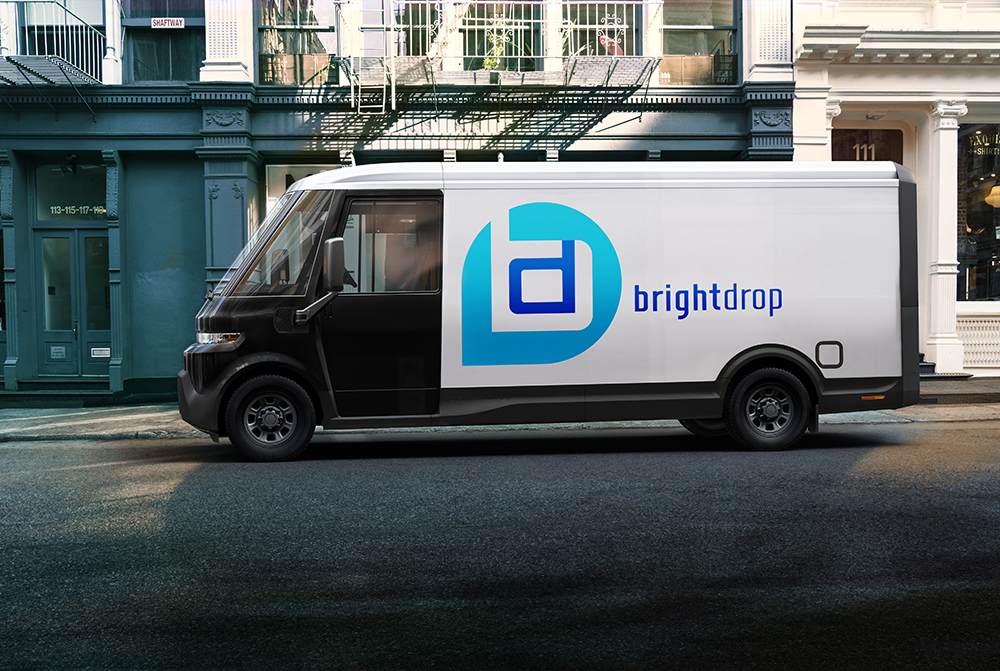
BrightDrop has already delivered 500 EV600s to FedEx, with 2,000 more e-trucks on order for the future.
Marquee Customers
It is an electric vision that has attracted some marquee customers. BrightDrop has already delivered 500 EV600s to FedEx. Since then, FedEx has signed on to purchase another 2,000 BrightDrop trucks, with Walmart reserving 5,000 trucks. Verizon has also announced that it plans to use BrightDrop’s smaller EV410 vans, while Merchants Fleet, a fleet management company, says it will purchase 18,000 BrightDrop EVs.
While the original impetus to go electric was to shrink our carbon footprint, what is increasingly driving the move to battery-powered vehicles is the potential cost savings. Charging most trucks costs about half of what filling up on diesel costs (although it takes about two hours with a commercial high-speed charger to fully charge an EV600). And electric vehicles only require a fraction of the maintenance. There are no oil changes, there’s no engine — just electric motors — and no cumbersome power train system to maintain. So Beauchamp says the EV600 is expected to save businesses on average about $7,000 a year per vehicle compared to an internal combustion engine truck.
The electric trucks are also easier on drivers and delivery people. The EV600, for example, has LED headlights, front- and rear-facing cameras, radar, and ultrasonic parking-assist sensors. A collision-avoidance system is included, along with a 360-degree view for maneuvering into tight spots. The 2023 all-wheel-drive version of the EV600 will have a 250-mile driving range and come with lane keep assist next year.
The additional technology makes the driving experience more comfortable, which many retail and fleet operators hope will help them retain employees in an area notorious for turnover. I was able to push a “Delivery” mode button on the dashboard, for example, which automatically engaged the parking brake when I stopped, gave the horn two short bursts to let those around me know I’m stopping, and unlocked the bulkhead door so I could swivel around and grab a package. If drivers get a package out of the back via the rear rollup door, it will automatically lock again 15 seconds after the door closes.

BrightDrop EP1 ecart
Co-optition is King
GM’s BrightDrop isn’t the only EV maker targeting retailers and other commercial opportunities. Amazon has invested in newcomer Rivian, which is making electric vans for the online retailer. But Amazon is also hedging its bets by partnering with Stellantis, the auto company formed from the merger of Fiat Chrysler and Peugeot, and plans to purchase Stellantis’ Ram ProMaster battery electric vehicles when they become available next year.
Meanwhile, there are several independent outfitters and integration specialists looking to put all the new technology together for customers, from infrastructure support to fleet management.
“There’s a big co-optition going on right now,” explains Alf Poor, the CEO of Ideanomics, an integration company that offers everything from EVs to infrastructure support to commercial customers. From battery companies to parts suppliers to technology firms, competing businesses in the EV space are increasingly working together to spur the electrification of transportation. And Poor believes businesses — rather than consumers — will be first to adopt innovations like wireless charging systems for electric vehicles — something his company is already working on.
Main Takeaways:
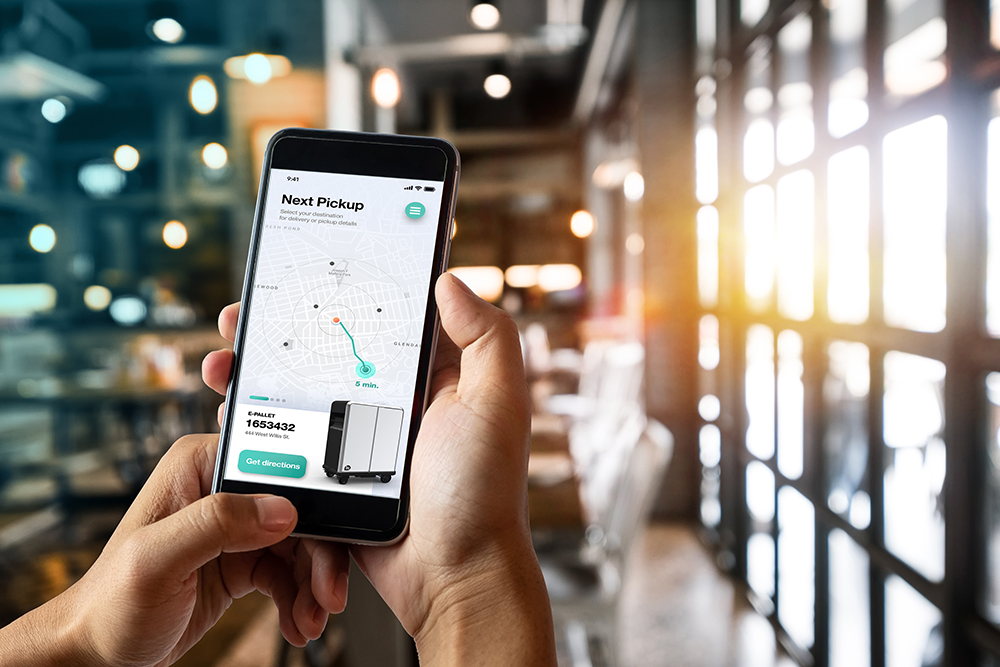
BrightDrop’s cloud-based mobile asset management platform
-
Electric vehicles are being deployed in first- and last-mile delivery tasks.
-
Integrated electric delivery systems can boost deliveries by 25 percent.
-
Electric trucks require less maintenance, lower charging costs, and a lower total cost of ownership.

INTERNATIONAL SPOTLIGHT: MEXICO
Tips and Tricks for Doing Business in Mexico
On a recent trip to Mexico City, we got an in-depth look at how the Mexican formal and informal CE markets operate. Here’s what we found.
By SAM HITT
“Mexico is like the Wild West of retail,” said my host, Carlos Asencio, director of operations at the independent distribution company ES DE ASIA, in our car ride back to my hostel located a block away from the iconic Templo Mayor. “So many American businesses come down to Mexico expecting it to behave similarly to the U.S.,” he went on to say. “That simply isn’t the case.”
We had just spent the previous 10 hours taking the train around the immense sprawl of Mexico City, which is North America’s largest metropolitan center with 21 million people. This journey took us across the full gamut of Mexican consumer electronics retail from open-air markets selling knock-off speakers and refurbished brand-name products to upscale malls, with the latest and greatest in audio equipment from the likes of Bowers & Wilkins and McIntosh.
According to Statista, the size of the consumer electronics market in Mexico is $19.89 billion. On paper, this pales in comparison to the U.S. market, which weighs in at a whopping $144.5 billion. However, these figures likely greatly underestimate the true value of Mexican CE retail, because the statistics do not account for the impact of the robust informal market, which caters to the vast majority of the population that cannot afford to buy expensive brand-name products.
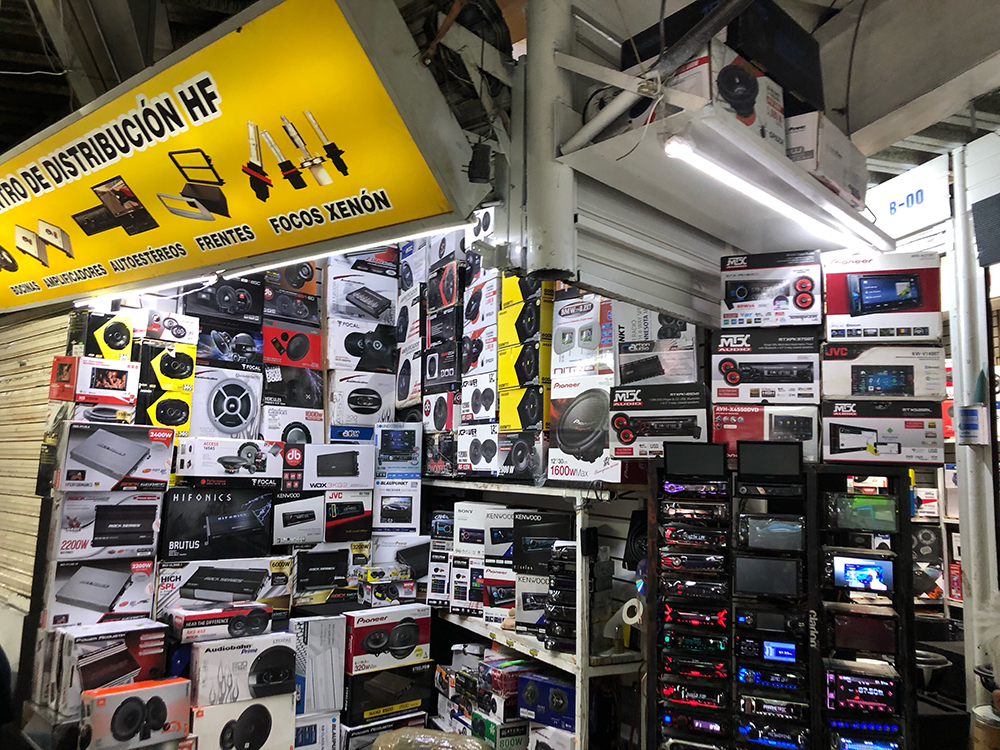
The Formal Market
For those looking to do business in Mexico, understanding the immense income inequality is central to formulating a successful business strategy. According to the IMF, the richest 20 percent of households in Mexico have an income that is 10 times higher than the poorest 20 percent of households, which is an income gap that is roughly twice as large as the standard Organization for Economic Cooperation and Development (OECD) member country. Therefore, most American brands will be looking to develop a strategy to engage with the top 20 percent of the population.
To understand how the luxury consumer electronics retail industry operates, Asencio took me to one of the 27 Liverpool department stores scattered throughout Mexico. Comprised of eight floors, the Liverpool we visited had an entire level devoted to consumer electronics. The department store floor plan featured a myriad of displays big-name brands such as Samsung, Apple, Hisense, and Sony, as well as special listening rooms for luxury audio brands such as McIntosh and Bowers & Wilkins.
However, instead of being organized based on categories like laptops, smartphones, and TVs, the store was organized based on brand. Furthermore, attached to each unique brand display was a sales representative supplied by a distributor who specialized in selling products from that brand. According to Asencio, this is an important dynamic for brands to be aware of, since it is the distributor or manufacturer, not the retailer, “that will put the merchandise there for display.”
This relationship between distributor and retailer is unique in that the brand and distributor are essentially purchasing display real estate within the store. Therefore, at the end of the day, the responsibility is on the distributor and the brand, not on the retailer, to sell product.

The Tepito open-air market

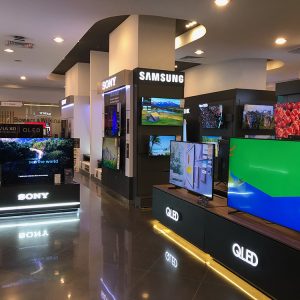
The Informal Market
The average monthly income in Mexico, according to data procured by the analytics firm CEIC, is $618. To put that in perspective, on a monthly salary of $618, buying a base-model Hisense TV, which costs roughly $200, would eat up almost a third of your income; therefore, for many Mexicans, such a purchase just isn’t feasible. As a result, most people turn to the informal market to satisfy the vast majority of their consumer electronics needs.
As Asencio and I walked around the massive open-air market in Tepito, where street vendors frying up shrimp empanadas pressed in shoulder to shoulder with people selling piles of blenders and speakers, he turned to me and said: “If you want to get rich in Mexico, play the volume game.” Tepito, a notoriously rough neighborhood in Mexico City, is truly a testament to the human entrepreneurial spirit. From the second you emerge from the train station, you are bombarded with sellers who have colonized every inch of ground while leaving just enough room for people to squeeze in between shops.
Tepito is one of the central hubs of the Mexican informal market, and according to Asencio, it is where vendors from around the country come to buy knock-off and refurbished products in bulk. While official figures are hard to come by in regard to the informal market, he estimated that over the course of a year, some of the larger wholesale retailers in Tepito can make over $2 million in profit.
So where do these products come from? If your first guess was China, you certainly wouldn’t be wrong. However, a significant amount of the consumer electronics sold in Tepito also come from the U.S. This was a process that Asencio was able to diagram for me in great detail, since his company works on acquiring products from the U.S. for both the formal and informal markets.
For example, a distributor in the U.S. may have excess or failed merchandise that is taking up valuable warehouse space. If the product can’t be shipped to stores, it will contact companies such as ES DE ASIA to buy the containers for 20 cents on the dollar. The product will then be shipped down to Mexico and sold in bulk to wholesale retailers that can turn around and sell the product to consumers at a highly discounted price.
Moral of the Story
The informal and formal consumer electronics markets in Mexico hold a significant amount of potential for American brands that are willing to adapt their business strategy to the needs of the Mexican market. Arguably, the biggest thing for businesses to keep in mind is that it takes relationships to do business in Mexico. As a result, brands will benefit greatly from having a team of people with in-depth knowledge of the Mexican market.
Those interested in learning more about doing business in Mexico can contact Carlos Asencio from ES DE ASIA at casencio@esdeasia.com.

MUSIC TECH
Music Tech for the
Post-Pandemic World
The pandemic led record numbers of people to take up instruments, many of which push the cutting-edge of innovation and education.
By MIKE KOBRIN
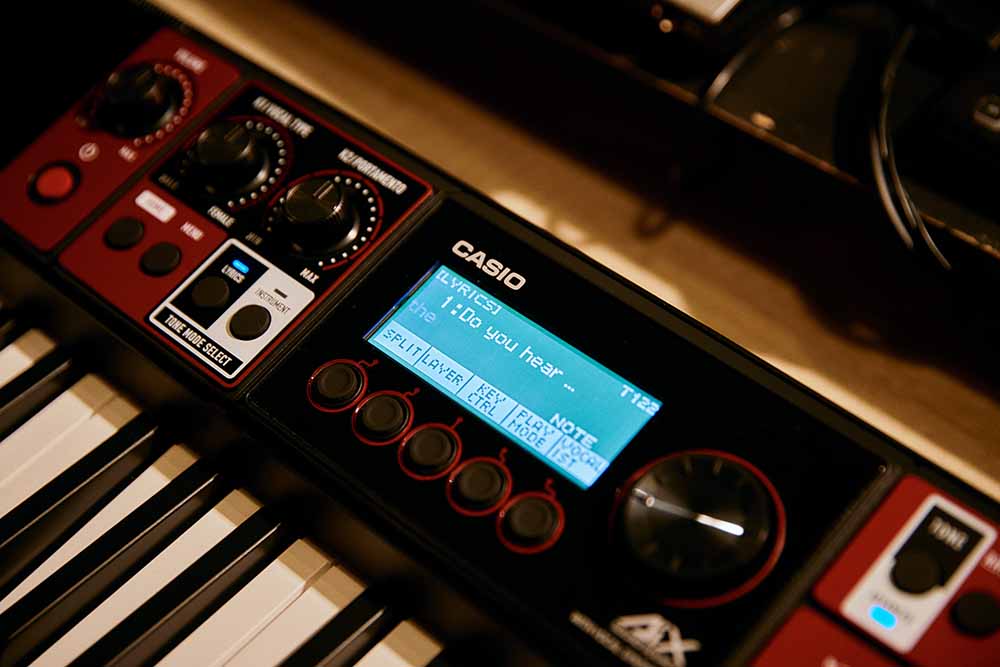
There’s nothing like a two-year hiatus from normal life to inspire you to get creative at home. Not everyone is cut out for musical virtuosity, but even just playing music for your own pleasure can be spiritually rewarding, especially if the learning curve and entry price aren’t too steep. And folks are taking up instruments in record numbers, according to industry analysts at Music Trades (via Forbes Magazine), with the musical instrument market growing 22 percent in 2021 over the previous year. Peter Giles, president of Giles Communications, which has represented some of the world’s top keyboard makers, says “Yamaha and Casio all saw big rises in keyboard sales during the pandemic, as people wanted to fill their free time and spend time with their families.”
“The pandemic has absolutely brought more people to music than I can remember ever seeing,” says Mike Martin, GM of marketing for Casio Musical Instruments. “Some are picking up an instrument again, and some are picking them up for the first time, especially portable keyboards. It’s giving keyboard players the benefit that guitar players have always had – being able to pick it up and play anywhere.”
Of course, beginners just starting out may not sound pleasing to those within earshot, but plenty of solutions exist that can soften the sonic impact of sour notes, less-than-stellar voices, and jerky beats. The demand for online music lessons has also skyrocketed in popularity thanks to convenient Internet-based services, like MasterClass and Playground Sessions, which help everyone from casual learners to seasoned veterans. And since homes often do triple duty as offices, daycare centers, and living spaces, space-saving gear can come in very handy.
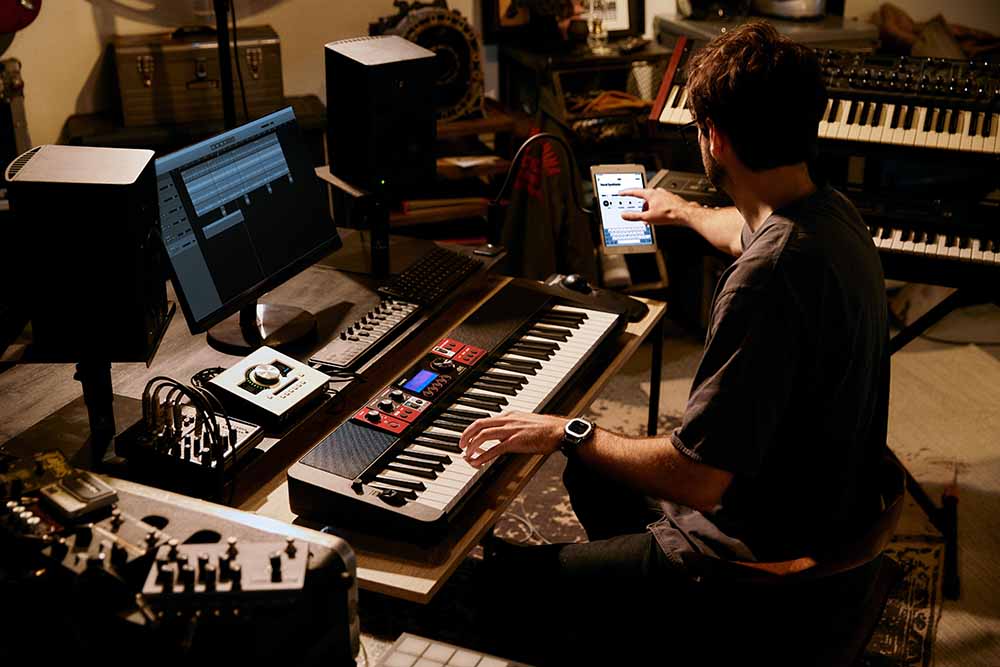
Learn to Play Like the Pro You Aren’t
Parents and apartment dwellers often dread budding drummers smashing along to their favorite rock bands with little regard for their surroundings. Enter Yamaha’s DTX8K-M electronic drum kit ($2,799; Sept. 2021), which incorporates real wood and puts out impressively realistic sounds. The drum surfaces are available in ultra-quiet mesh, or textured cellular silicone for a snappier response for experienced players. Connectivity options include USB, analog line-in, MIDI, and Bluetooth, and you get a host of features from recording to fully programmable sounds.
Some singers truly belong in the shower, but the Casio CT-S1000V keyboard ($449; Jan. 2022) has a cool vocal synthesis feature that takes your awful voice out of the equation. Simply type your lyrics into an iOS/Android app and the keyboard will sing them — and in a twist that borders on creepy, you can adjust the synth voice using parameters like age and vibrato or even create a custom voice based on your favorite recording. “Our target was originally the music producer, but we’ve found people who want to be singers who could not. We worked with Money Mark from the Beastie Boys who works with kids with disabilities who physically cannot sing, and this gives them a voice, and that opens creative possibilities for a lot of people.”
If your piano chops are as bad as your voice, you’ll want to check out Playground Sessions, which works with the company’s PG-150 digital keyboard ($149.99, plus $17.99/month for lessons) and your iPad (via USB) to get you up and playing your favorite music in no time. Co-founded by legendary producer/arranger Quincy Jones, Sessions offers a subscription-based app that gives you access to tons of on-demand videos that break down the world’s greatest pieces of music in a step-by-step fashion that anyone can grasp (just ask multi-Grammy winner Jon Batiste’s mom, an enthusiastic user!). The app uses backing tracks and MIDI signals from the keyboard to detect accuracy and push you in the right direction to keep you in time and on pitch, and you get game-like scores and stats to keep you motivated. It also works with other MIDI-capable keyboards like the Casio mentioned above.
Not interested in plucking strings or plunking keys to make music? Try Moog’s Etherwave Theremin ($899; Mar. 2022), which not only does all the wild things a regular Theremin does (think sci-fi sounds by waving your hands next to the antennas) but lets you control compatible synthesizers and effects pedals with gestures in the air.
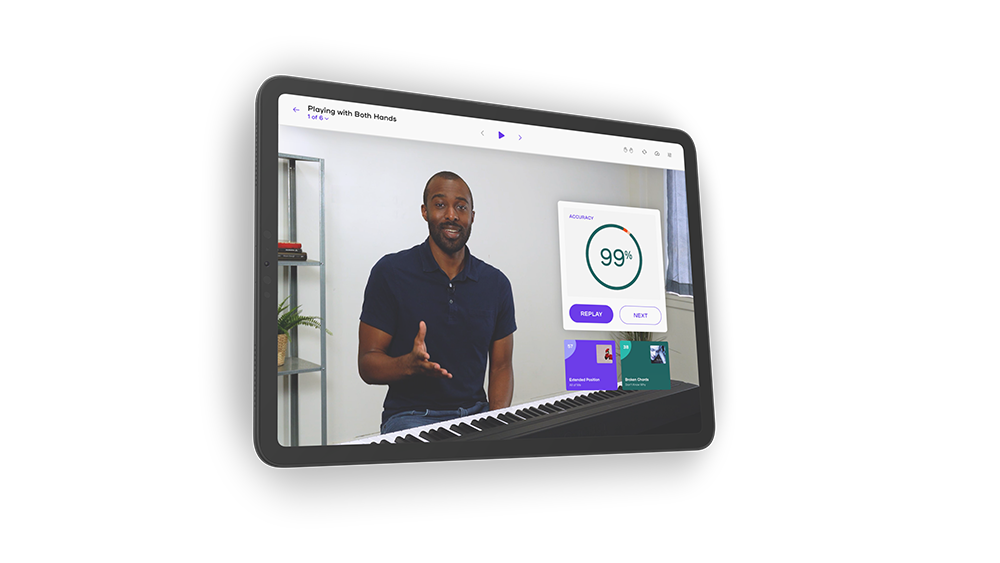
The Playground Sessions PG-150 digital keyboard works with a series of subscription-based music instruction videos.
Save Space with Smaller Gear
The Positive Grid Spark Mini practice amp ($229; Mar. 2022) measures roughly 5.75 x 5 x 6.5 inches and weighs a scant 3.3 lbs, but its pair of angled two-inch speakers and passive bass radiator give you full sound in stereo. Packed with features like Bluetooth, EQ, and an eight-hour rechargeable battery, you can play solo or jam along with the amp’s customizable auto-generated backing tracks.
If you’re looking to create melodies without a bulky full-size keyboard, the Akai MPK Mini Play MK3 keyboard ($119; Jan. 2022) has everything you need to make music, including built-in speakers, bundled DAW software, MIDI control, and 14-hour battery life. If you need more keys, the Korg Blackstar Carry-On foldable piano ($99; Nov. 2021) has 49 of them, and it folds in half to a little over 15 inches long so you can easily stash it away. It also doubles as a MIDI controller and has built-in speakers as well as an eight-hour rechargeable battery.
DJs aren’t left out of the mix here: Pioneer’s DDJ Rev1 digital DJ controller ($259; Jan. 2022) lets beginners get their fingers wet in the DJ game without spending thousands on a pair of turntables, destroying valuable vinyl, or taking up tons of space (at just 20.7 x 10 inches). With faders and knobs laid out just like a pro DJ battle-style deck, as well as a pair of jog wheels designed for easy scratching, the Rev1 will turn your desktop or coffee table into a serious digital DJ booth.
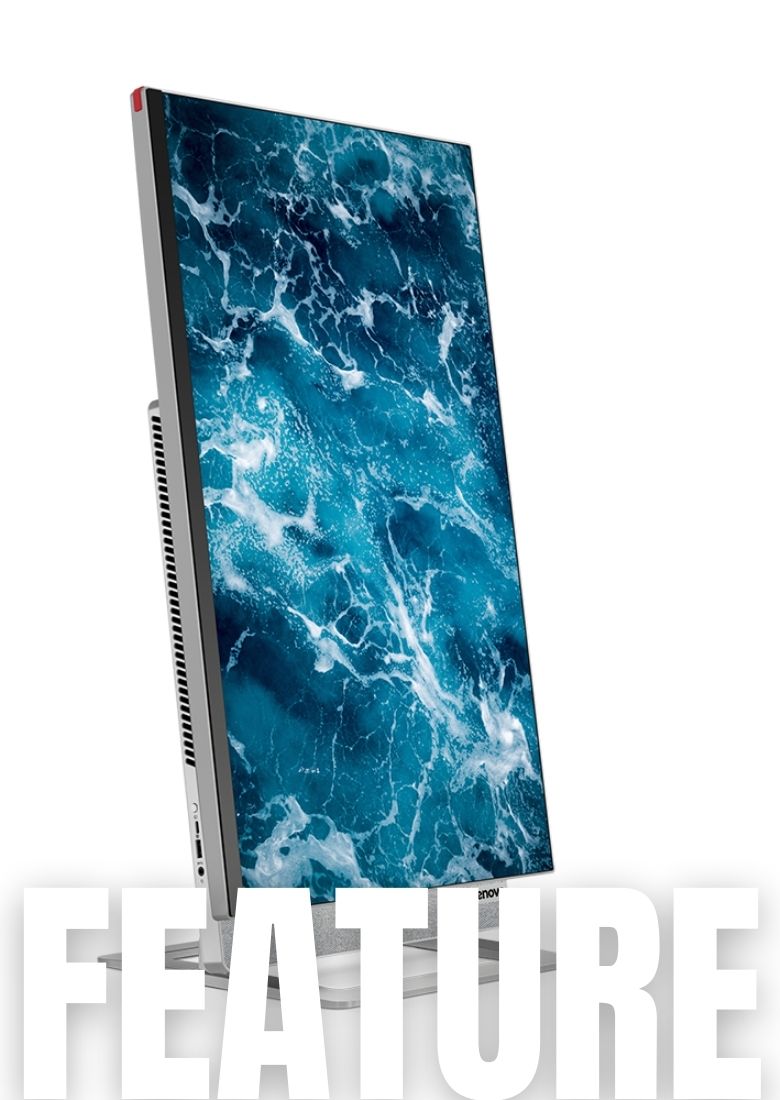
COMPUTERS
Best
All-in-One Desktop Computers
for Creative Work
Designers, photographers, filmmakers, editors, and architects usually seek out computers with supreme monitors, comfortable ergonomics, powerful processing, and distinct looks. These all-in-one models fit the bill for both Mac and Windows users.
By EGON SANDERS
While svelte laptops and desktop towers still dominate the home computing space, those in various other shapes and sizes are becoming more and more common. Aimed at a number of different consumers but often with the “creative professional” in mind, these computers eschew standard dimensions to find their niche in a wide array of home offices and studios. We’ve selected some of the most compelling offerings on the market, whether you’re looking for something tiny that blends into the background, or an all-in-one machine that serves as the centerpiece of your creative workspace.
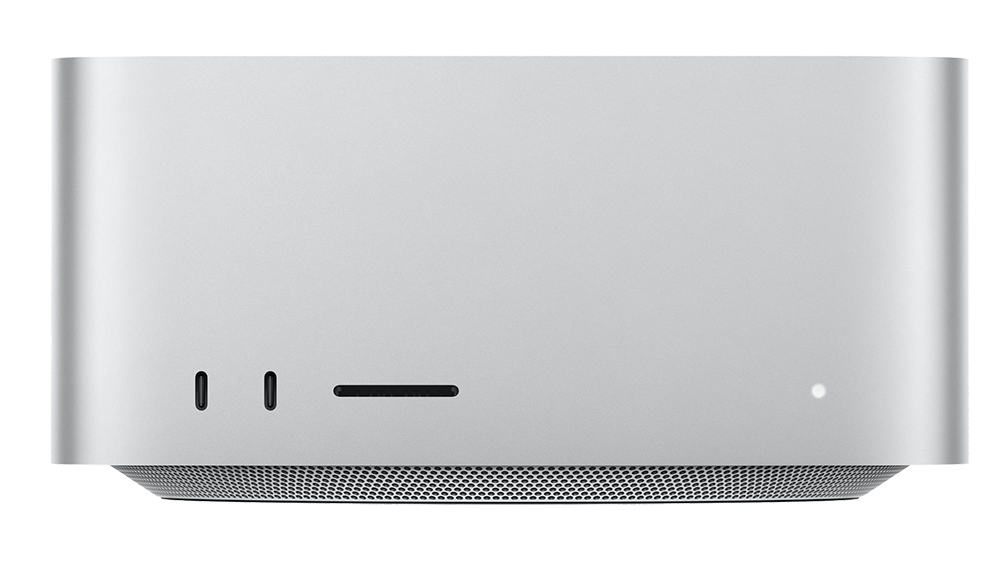
Mac Studio
The Mac Studio is a compact, boxy computer that’s designed to live on your desk; for reference, it’s about the size of two Mac Minis stacked atop one another. It’s heavy, and not really designed to be ported around, but in a pinch, it can be. Most of all, the Studio is powerful: Running on Apple’s latest M1 Max or M1 Ultra chips (depending on which model you opt for), it’s essentially a beefy desktop computer that would normally live inside a massive case, shrunk down to something that sits neatly in the corner of your desk. It’s got plenty of ports—including six USB-C ports, two of which are on the front—and is whisper quiet, even with the fans all the way up. Prices start at $1,999 for the base model, while the top-of-the-line model goes all the way up to a whopping $7,999.
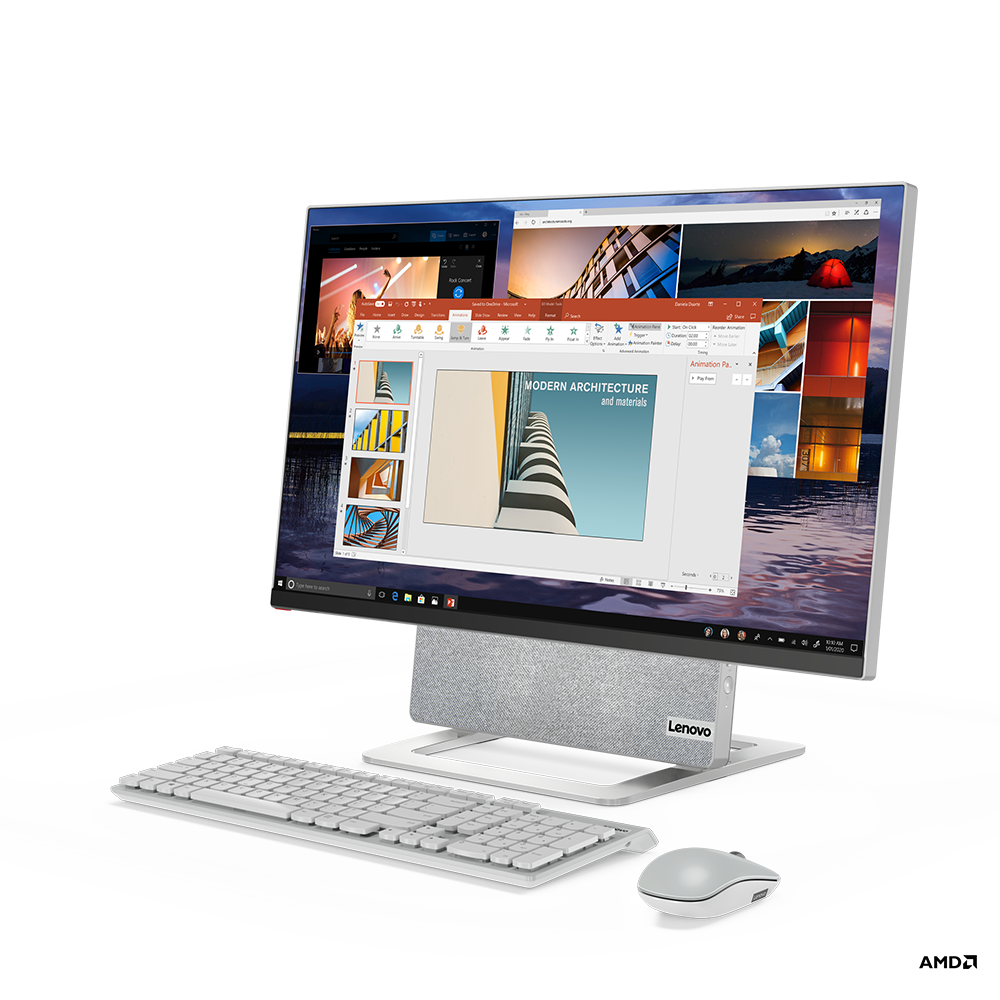
Lenovo Yoga AIO 7
The Yoga AIO 7 is possibly Lenovo’s most exciting PC design to date. Something of a response to Apple’s iMac, this all-in-one desktop goes a step further by incorporating a rotatable hinge—meaning the touchscreen display can be turned from horizontal to vertical, making it easy as pie for users to read webpages, PDFs, Word docs and vertical videos in their native format. The display itself even supports integrated wireless casting, letting users send videos from their smartphone or tablet directly to the screen, without having to so much as touch the computer. The display can be tilted from flat to up to 20 degrees for viewing comfort; the JBL Harman-certified stereo speakers are positioned under the rotating display, ensuring that audio is always aimed at the user, regardless of the screen’s orientation. The AIO is powered by the AMD Ryzen 7 4800H CPU and uses an Nvidia GeForce RTX 2060 for graphics, making it well suited for content creation and games. Available for $1,999.
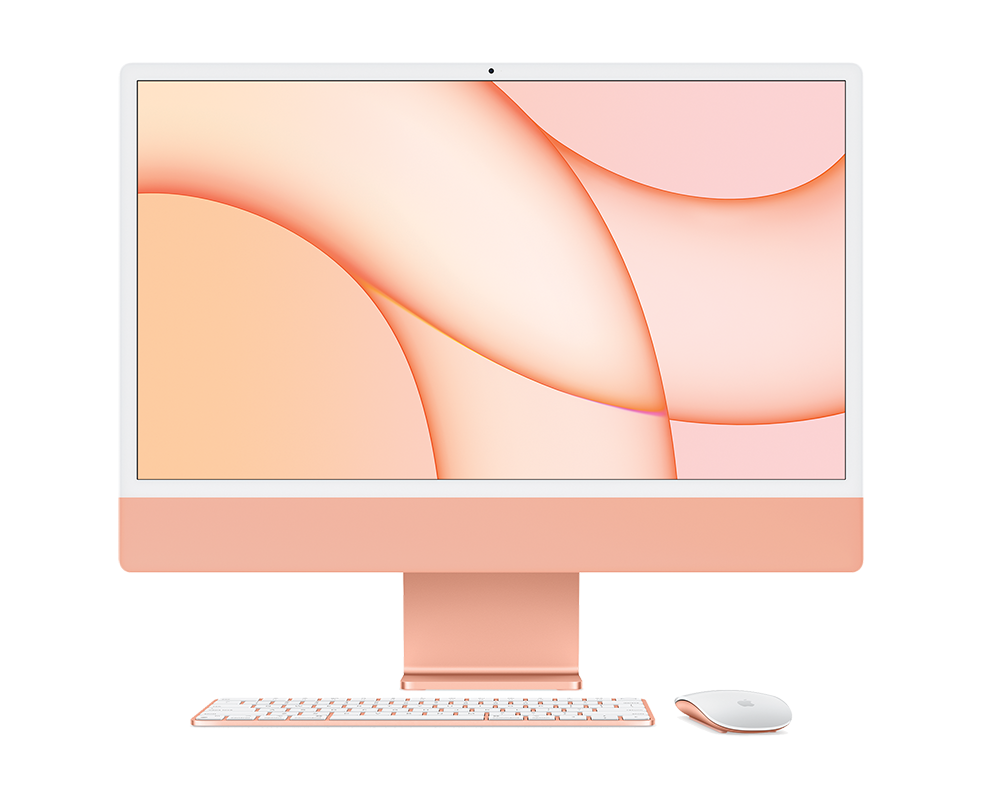
iMac
With its most recent iteration of the iMac, Apple has once again redefined the design possibilities for all-in-one computers. The entry-level iMac comes with Apple’s own M1 chip, as well as 256GB of SSD storage, two Thunderbolt / USB 4 ports, 8GB of unified memory, and a seven-core GPU for $1,299; it scales up from there, both in terms of price and performance. Then, of course, there’s the best-in-class, 4.5K Retina display—a bump up from its predecessor’s much-celebrated screen, and complete with Apple’s True Tone technology, which automatically adjusts colors and intensity based on your surroundings. Oh, and it comes in seven colors: blue, green, pink, orange, purple, yellow, and silver, for whatever your stylistic needs.
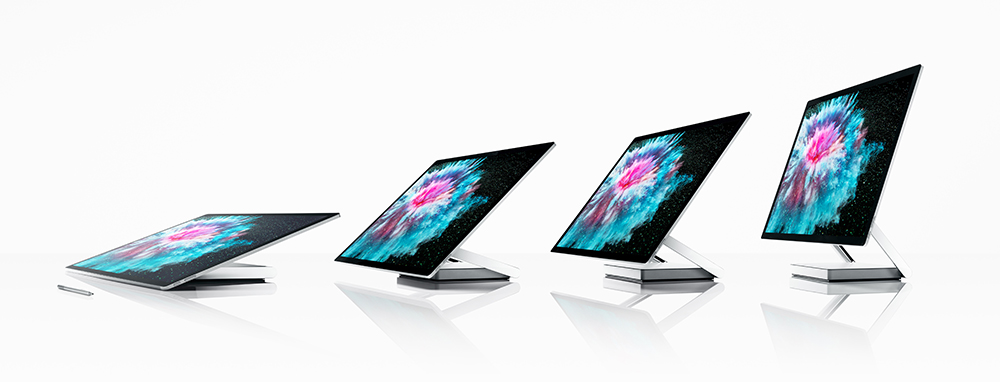
Microsoft Surface Studio 2
For visual artists looking to draw and design digitally using a stylus, the Microsoft Surface Studio 2 is likely the single best creative all-in-one computer around. The 28-inch touchscreen display panel is mounted on what Microsoft calls a “zero gravity hinge”—a spring-assisted, dual-hinge stand that allows the screen to be oriented upright for traditional desktop use, or low (similar to that of a drafting table) for comfortable drawing and designing. The Surface Studio 2 comes with a Surface Pen, an excellent stylus that can hit 4,096 levels of pressure sensitivity and tilt support, making for a very natural on-screen drawing and writing experience. Available with an Intel Core i7 CPU, 16GB RAM, a 512GB SSD, and an Nvidia RTX A2000 GPU for $2200.

Raspberry Pi 4B
Raspberry Pi has been the de facto inexpensive, single-board computer for more than a decade now, and the latest 4B model is the most powerful to date. Starting at just $35 for the 2GB model, the Pi can function as a web server, a dedicated game emulation device, an educational PC for kids, a media center hub, and much, much more. It uses a 1.5-GHz Broadcom CPU/GPU combo, and sports four USB 3 ports, two micro HDMI ports (with support for 4K displays), a Gigabit Ethernet port, and a microSD card slot. Beyond traditional computing or media hub duties, the beauty of the Pi has always been its flexibility: if you’re looking for a tiny computer to power your DIY robot or custom Internet of Things (IoT) device, it’s tough to find a better fit. Most recently, the 8GB model came out, with enough RAM for serious computing and productivity work.

Chuwi Herobox
Something of a compromise between the deep flexibility of the Raspberry Pi and the plug-and-play ease of use of a traditional desktop PC, the Chuwi HeroBox Pro maintains a low profile (7.36” x 5.43” x 1.46”; 3.1 pounds), letting it squeeze onto even the tiniest of desks (or mount easily via VESA mounts). It’s built with low-power components, capable of running Windows 10 while keeping overall power consumption below 10 watts. It’s not built for gaming or heavy creative work, but it can run basic productivity apps or be used as a home entertainment system in the living room. What’s more, it can be oriented horizontally or vertically, and given its small size and VESA compliance, it’s a great PC to use for running digital signage or a gallery installation.

VIDEO
Watched Out
There are worrying signs for streaming –
but what does that mean for smart TVs?
By STEPHEN SILVER
In April, there were suddenly very worrying signs about the future of streaming.
First, on April 19, Netflix announced its worst quarter in memory, stating that it lost subscribers in a quarter for the first time in a decade, and then forecast that it will post an even steeper subscriber loss in the second quarter.
“In the near term… we’re not growing revenue as fast as we’d like,” the company said in its shareholder letter, which attributed the loss to factors ranging from its pullout from Russia, to stiffening competition, to lost opportunities from password sharing. Other observers had other theories, ranging from a drop in the service’s quality, to recent price increases.
Less than a week later, Warner Brothers Discovery announced that CNN+, the news-focused streaming service that CNN was looking to as its future for the post-cord-cutting era, would shut down, just a month after it launched.
These developments indicate that, perhaps, assumptions that have been in place for the last several years ought to be revisited. Is streaming really the future of entertainment? Is the technology that most of Hollywood has spent the last decade betting on actually going to make anyone money?
There’s also the question of what these developments mean for the hardware market. We asked John Buffone, executive director and industry analyst for The NPD Group’s Connected Intelligence practice, what these developments might mean.
Buffone said he doesn’t think that the sky is falling on streaming, at least in terms of its tie-in with smart TV.
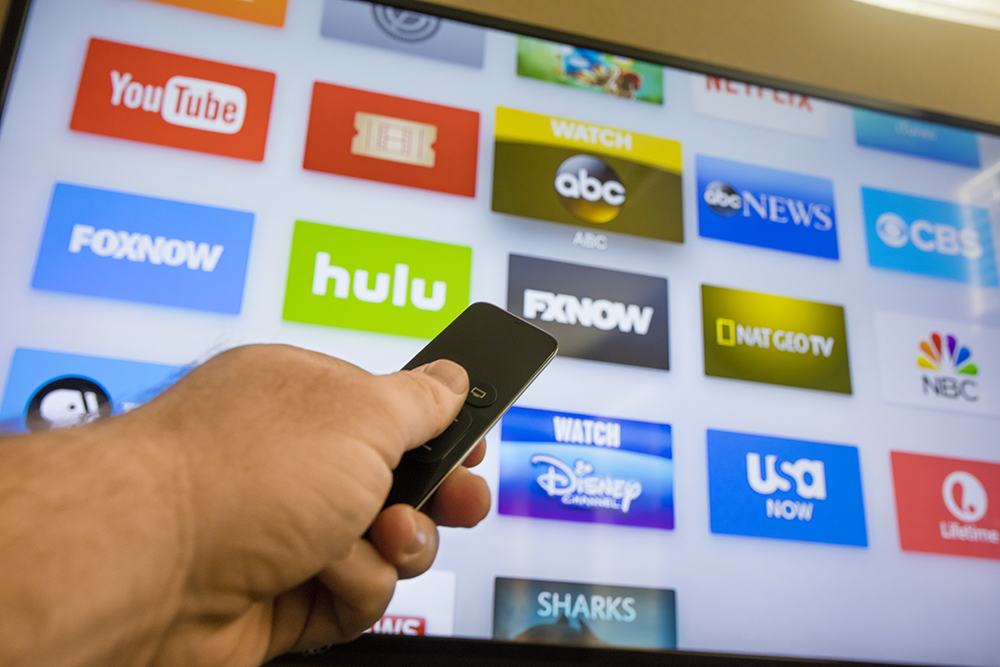
“First, streaming content does help sell TVs,” he told Dealerscope in an e-mail. “In fact, content has factored into 31 percent of replacement TV purchases in the past one to two years,” he added, citing the NPD Group’s TV Ownership Trends Report.
Buffone elaborated on what the recent numbers mean, citing the explosion of streaming that took place in the early stages of the pandemic.
“We’re seeing signs of a shift, not a decline, in streaming,” he said. “2020 saw viewership levels reach a peak that was in part driven by pandemic stay-at-home orders. Concurrently, the industry launched numerous major direct-to-consumer streaming services. The combination resulted in massive viewership spikes. Because these factors drove the growth, we knew it would recoil, and that’s what we started to see in late ’21: declines versus pandemic highs.
“However, the streaming industry remains healthy, with viewership levels largely above pre-pandemic rates; we’re just working off impossible comparisons to mid-pandemic highs,” he added.
Paul Gray, research director of Omdia, made some other comments about today’s TV market on April 27 during the global press conference previewing this September’s IFA show event. Gray’s observations also spoke to the continuing importance of streaming for the TV market.
“Of course, streaming has been an amazing success in the last couple of years, and many, many more consumers are now using streaming services. Over the pandemic, consumers just watched more TV, both linear live TV… and also from streaming services,” Gray said.
“And we expect that the home cinema market is going to grow as more consumers take advantage of Hollywood also now simultaneously launching and releasing movies on streaming platforms as well as conventionally, through cinemas. So we expect that to add value to the home cinema market.”
Gray added that gaming support is also a major driver in demand for TV purchases, as the gaming business continues its shift from consoles toward online streaming.
That NPD report, released in late April, found that screen size and picture quality are motivating TV purchases these days — and that the average size of purchased TVs has increased by three inches in the last two years, to 47.5 inches.
But that doesn’t mean smart TVs have lost their appeal to consumers.
“The shift is one from all services growing to a battle for share of the viewer’s time,” Buffone added. ”Given this, we expect content to continue to support sales of smart TVs, with the available programming array (apps) on those TVs becoming increasingly important as consumers navigate and churn through a larger mix of content options.”
SUMMARY:
- Netflix recently announced that it lost subscribers in the first quarter and expects to lose more, leading to some doubts about the viability of Hollywood’s multi-billion-dollar bet on streaming content.
- However, industry experts don’t believe that the bad quarter by Netflix is any type of bad sign when it comes to the popularity of smart TVs.
- In fact, growth in the home cinema market is expected to continue in the coming years, with the quick at-home availability of Hollywood movies seen as one of the reasons why.
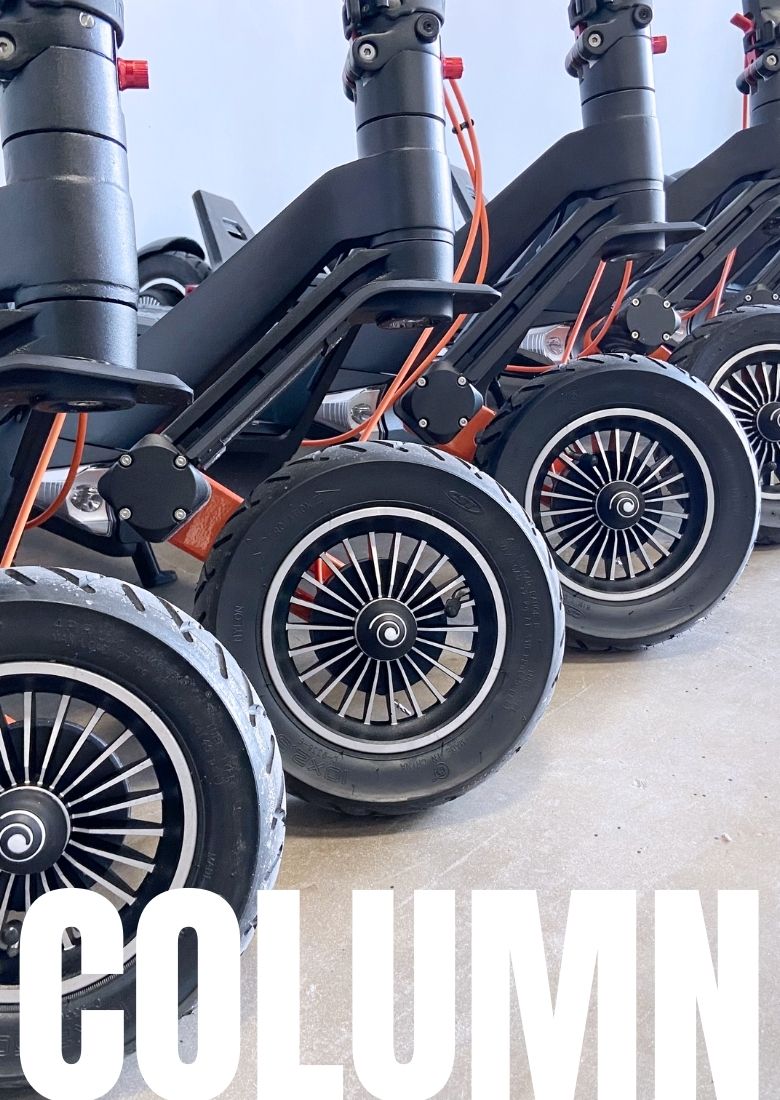
RETAIL ON THE RUN
A Store
Visit With Fluidfreeride
Founder and CEO
Julian Fernau
INTERVIEW BY TOM SAMILJAN
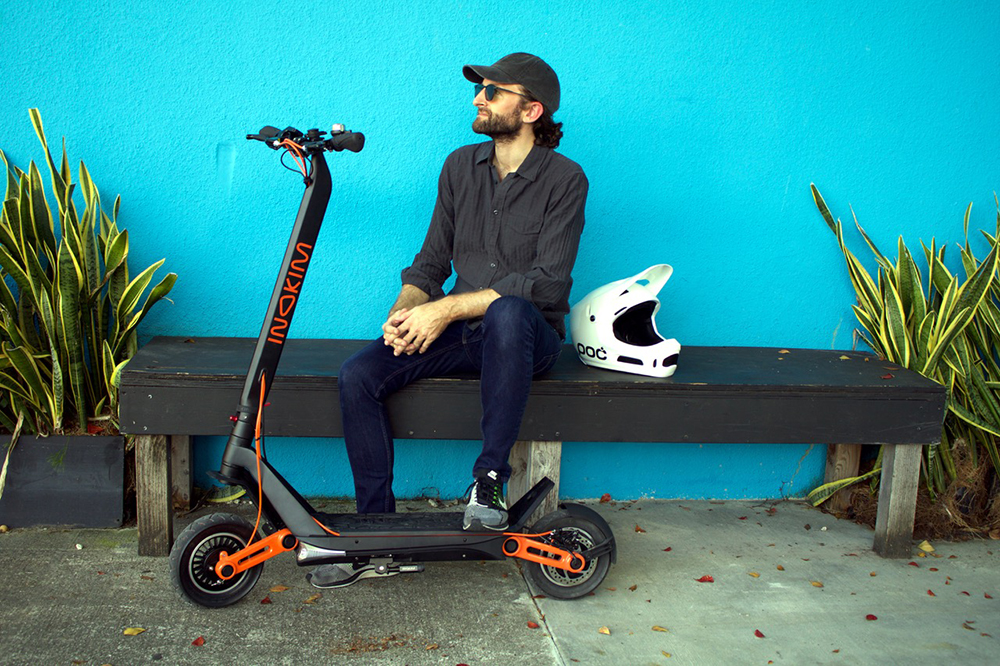
Julian Fernau worked for nearly 14 years at Proctor & Gamble in Europe and the Americas, eventually landing in Miami, where in 2018 he launched Fluidfreeride, a store devoted entirely to the growing e-scooter category. While still primarily an e-commerce operation with a full coterie of e-scooter explainer videos and virtual demos, Fluidfreeride (fluidfreeride.com) has brick-and-mortar showrooms in Miami and Brooklyn. It also caters to its online and in-store customers via service centers in Miami and Brooklyn, as well as through a network of third-party repair shops across the U.S.. We spoke with Fernau about how Fluidfreeride got started, what’s happening in the e-scooter market, and how to build an omnichannel business in a fast-growing new category.
“ We try as much as we can to discourage customers from buying the [expert] scooters if they don’t have any experience.”
What’s the history of Fluidfreeride?
In 2018, I went through what I think most of our customers go through, which is that I tried Bird and Lime for the first time, when they got to Miami. At that time, it was exciting, and people were chasing them down the streets. I got on a [rented] e-scooter with my wife, and that’s when I had this kind of aha moment and realized that electric scooters are not just for kids. I think that’s still a bit of a misconception about the category.
Then we tried to buy one, and it was impossible. There were one or two offers on Amazon, and those sold out quickly. There were few independent retailers, but even then, it was difficult to judge what we should even buy, and whether what we would buy was trustworthy or not. I had some contacts in China and had tried a little bit of third-party selling on Amazon already, so I looked at different suppliers, ordered a ton of samples, and eventually, just decided to keep going down that road. We bought a container and set up a website.
The first website was a proof of concept, and we sold a few models, but even though they got to us late, we managed to deliver the first 100 pieces before Christmas that year. We only carried two models. But then we figured out the strategy that we’ve been following since then, which is that we want to differentiate ourselves by offering a wide portfolio of different scooters, and educate customers around what they need to know so that they can pick which scooter is right for their specific application. And then, to offer the service that comes with owning an e-scooter.
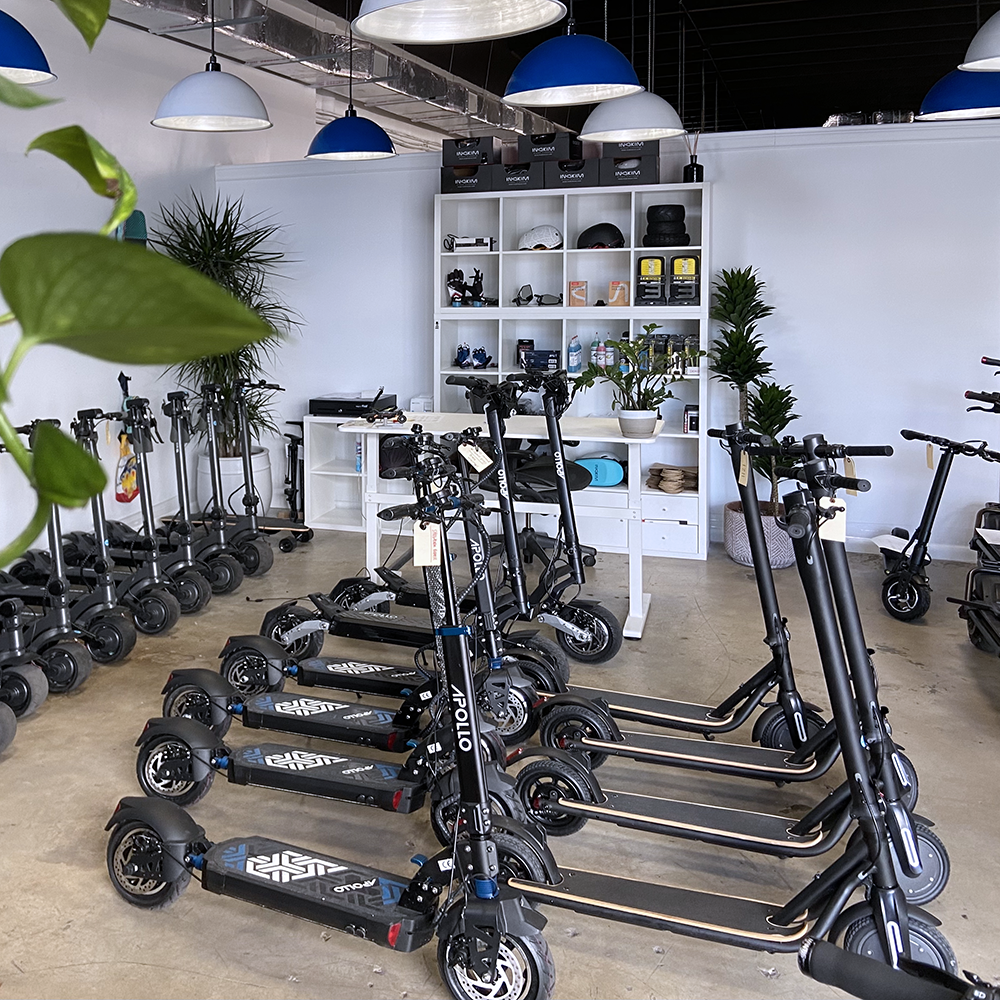
Apollo e-scooters on display at the Fluidfreeride showroom in Miami.
Why e-scooters specifically; why not include other electric transport such as e-bikes, e-skateboards, Segways, and the like?
I think you have to focus in order to be good at what you’re doing. A year ago, I ordered a few e-bike samples since we had the customers and the credibility. But then, looking at the technology that we received, and the lack of capability on e-bikes that we haven’t built over time, the way we did with scooters, we decided no, let’s focus on the growing market that we’re good at.
The same goes for Segways and one-wheelers. The scooter is a unique category and I think it’s going to be second to e-bikes as a means of transportation. They’re easy to ride — you don’t need to be a skateboarder, and anyone we put on an electric scooter can basically just go. That’s why I think it’s a big enough category that it deserves full focus. And there’s quite a range if you look at our portfolio: The cheapest one we sell is $500 and the most expensive one is $4,500, and that’s still only a cut of the market that we choose to operate in. On Amazon, you can get e-scooters for $200, and at the other extreme are models that cost $9,000. So I think the category is big enough to just focus on that and then do it well.
“I kind of had this kind of aha moment and realized that electric scooters are not just for kids. I think that’s still a bit of a misconception about the category.”
Given the ubiquity of rental scooters, why doesn’t everyone just rent them? Why is ownership suddenly on the rise?
Rented scooters, of course, have great purpose in inner cities, and they serve as a driving trial for people to try out scooters. Companies like Lime and Bird have helped create the category. But people figure out quickly that if they want to use them every day, it can get quite expensive. Even if it’s just two miles or 20 minutes a day, it can add up to $200 per month, so you might as well buy a $500 scooter from us and use it every day.
So what’s the range of e-scooter products that you sell,
and which ones or for which types of riders?
The brands are not necessarily as much of a determinant on who a scooter is for, because every brand tends to deliver a little bit of range. In terms of range, you have these classic – what we call casual – scooters that are comparable to the rental types These are made by manufacturers such as fluid and INOKIM and run about $500 to $1,000. These don’t go as far, with limited power and ride quality, but they are very portable.
As you move up the segments, you get more power, sometimes a second motor that allows for faster acceleration and top speed. The batteries are bigger, so you have more range. And then a key element that a lot of people disregard when they are shopping for a scooter is ride quality – the quality of the suspension, the type of tires – and this is important. If you ride just two miles a day in, say, Manhattan and partially on the sidewalk, then it doesn’t matter that much. But if you use your scooter to commute, say, six miles from Brooklyn into Manhattan, you’re not going to ride on a rented-scooter-type model because it’s going to shake you, and it doesn’t enable riding with traffic due to its lower top speed.
The bulk of the business that we do is in the higher segments, where we are relatively specialized and where we even offer scooters that just look like a bigger version of a rented scooter, with a bigger motor. These scooters by manufacturers such as APOLLO and Mercane let you do much longer commutes: They have the same form factor, but they go 30 miles an hour and the board is wider, so you’re able to stand in a more relaxed way. And then above that is the dual-motor segment with a more advanced suspension that lets you take them on trails. We have customers in New York who say they use off-road scooters for back streets. These let you just glide along and let you, say, pass an e-bike ahead of you since you can cut out into traffic, pass, and then cut back in. You need this oomph in order to quickly accelerate even at these higher speeds.
And then there’s the top end – what we call expert. These scooters – the Kaabo Wolf Warrior and the NAMI Burn-E-2 Max — go 60 miles per hour with a range of 90 miles. We try as much as we can to discourage customers from buying these if they don’t have any experience. Yes, it’s an additional level of ride quality, with hydraulic mountain bike downhill suspensions that let you glide along no matter the road conditions. And 60 miles per hour on an e-scooter feels like 200 miles an hour in a car, so this segment is more for hobbyists – people who really want to have fun on scooters rather than use them for commuting.
“Apart from inner cities, we sell many of our bigger machines to rural areas because that’s where one can have fun with them.“
Which are the biggest markets for e-scooters in the U.S., and where do people ride 60 miles per hour?
Our biggest market, where about 20 percent of our business is generated, is New York City, just because it’s so dense and urban, with lots of bike lanes. The Bay Area overall is big, as well as San Diego, Los Angeles, and Orange County. Interestingly, Miami, where we are based, is not so good for scooters, despite it being a big city. The roads are bad, there aren’t many bike lanes, and there isn’t really a consistent sidewalk, so those mainstream $500 to $600 scooters that everyone starts on just aren’t good for commuting, say, five miles in between traffic and cars. And that’s why Miami is a bad scooter city.
Apart from inner cities, we sell many of our bigger machines to rural areas, because that’s where one can have fun with them. There’s less traffic, and the roads are probably in better shape.We tend to sell the bigger vehicles that can be used for offroad riding, similar to offroad mountain biking, to people who live outside cities.
As for the 60 mph scooters, even those are for city applications, especially if you don’t need to take it on a train, but need to commute 20 miles every day to work, which makes this kind of a scooter ideal, because you can get a 50-mile round trip out of it. And just because it goes 60 mph doesn’t mean you have to ride it that fast.
“Rented scooters, of course, have great purpose in inner cities, and they serve as a driving trial for people to try out scooters.“
Name three things you’ve done that you attribute
to the success of the store.
First off, choose the right category. The e-scooter market is hot, and the rental scooter companies just popularize the category more by just being there and making it possible for people to essentially do test drives. Secondly, invest early on in SEO, because getting traffic is expensive, so getting good positions on Google searches is ultimately the only way to make this sustainable. And third, invest early in customer service. We don’t see anything as a one-off sale; we see it as a long-term customer experience. Customers might start out with a small scooter and then, six months later, they want to go faster and have more fun, so they upgrade. But this only works if the first experience with us is positive.
Is there anything in the building of your business that didn’t go as you expected, and which you learned from?
We had to organize a recall on one of our biggest products in 2019. We noticed that its brakes were starting to fail. This is a new category and with some of the manufacturers, especially if they’re right out of a factory, we’re often the only people who hold up the safety flag. We had to replace 2,000 calipers with customers, and it was a huge expense at a time when we didn’t have a big organization.
What we learned was that before you launch a new product, do your homework. Everyone always tells you, hey, this is the best product we’ve ever had, and the sample might be perfect, but the first 100 pieces you deliver really tell you what happens on the production line. This made us change how we assess products before we actually go all-in and buy large quantities to launch.
Visit Fluidfreeride at fluidfreeride.com.
[This interview has been edited for length and clarity.]
CUSTOMER EXPERIENCE
5 Ways to Build a Killer Customer Experience
in a Digital-First World
AI-driven digital-first solutions are revolutionizing customer service and helping businesses focus on continuous CX and workforce empowerment in 2022 to supercharge loyalty.
By David Singer, Vice President, Product Strategy, Verint

The business value of providing an exceptional customer experience (CX) is known but not always quantified. Watermark Consulting’s latest customer experience ROI study shows that investing in customer experience, whether you’re a CE retailer or manufacturer or otherwise, pays big dividends.
In the study, customer experience leaders significantly outperformed the broader market, generating a total return 108 points higher than the S&P 500 Index. In contrast, CX laggards had a total return 110 points lower than the S&P 500 Index. CX leaders also generated a total cumulative return that was 3.4 times greater than that of CX laggards.
Customers are engaging with brands in a more dynamic and interconnected way and their standards for a great experience are higher than ever before. Today, meeting customer demands hinges on how well a business can serve customers across a multitude of channels.
Here is a look at what’s trending in efforts to drive continuous customer experience improvement.
“Customers are engaging with brands in a more dynamic and interconnected way and their standards for a great experience are higher than ever before.”
Creating a Synchronized Digital-First Customer Experience
Digital channels will continue to expand in the contact center arena. Consumers are increasingly using digital, self-service, and voice channels to engage—and their expectations have skyrocketed. And as the number of channels that consumers use continues to increase, brands are faced with increasingly complex customer journeys. This trend will require true omnichannel intelligence to capture, index, and retrieve voice, video, and text interactions across multiple channels. In addition, speech and text analytics help provide critical insight into customer calls, chats, and emails that will help uncover insights into the many different ways customers want to engage and understand that customers will want to engage differently in each channel. Recognizing these channel nuances is critical to support a synchronized digital experience.
Supporting Service Through Social Messaging
As organizations optimize the contact center around digital-first engagement, we’ll see widespread adoption of delivering customer experience over social messaging channels that will leapfrog traditional ways of contacting customer services such as phones, emails, and live chats. With asynchronous messaging platforms – such as WhatsApp and Facebook Messenger – a customer can start, pause, or resume engagement with an agent online over a more extended period – sometimes hours or days. Quality assurance and performance programs must adjust to the nuances of this type of communication. For example, agents can now be coached in between each interaction to improve the customer service at every touchpoint.
“In today’s experience economy, consumer electronics brands and retailers must leverage new technologies to remain responsive to increased consumer needs and support brand differentiation.”
Opting Into the Gig Economy
The workforce now has different demands driven by today’s work-from-home environment. Gone are the traditional “9 to 5” workdays. Now people can design their job profile that best fits their needs and maximizes their earning potential. In the same day, a person can split shifts as a contact center agent during the hours when their home is most quiet, run DoorDash deliveries in between, and drive for Uber during peak hours. This new work model requires AI-driven workforce management solutions with flexible scheduling tools that promote “anywhere, anytime” work – a perk that will help employers win today’s talent war. The key will be to empower and enable the workforce to opt into a schedule that meets their individual needs while being able to manage it via a self-service portal in real-time.
“In a recent Watermark Consulting study, customer experience leaders significantly outperformed the broader market, generating a total return 108 points higher than the S&P 500 Index.”
Enabling Turn-by-Turn Agent Assistance
To address rising consumer expectations, real-time agent assist technology empowers customer service agents with in-the-moment customer guidance. This gives brands a powerful tool to assist employees as they work from anywhere to boost customer satisfaction and loyalty when creating empathy-led customer experience is imperative.
Democratizing IVAs with Low-Code
No-Code Technologies
We continue to see the proliferation of Intelligent Virtual Assistants (IVAs), thanks to a democratization of the technology. Today, low-code/no-code development platforms offer a do-it-yourself approach to help companies deploy enterprise-grade IVA solutions faster and more cost-effectively. A time-consuming and costly task that was once performed by data scientists has now been transformed, so that the technology is now accessible to non-technical users. This allows businesses to deploy production-ready customer service capabilities quickly and easily.
Trending in 2022: AI-Driven, Digital-First Experiences
In today’s experience economy, consumer electronics brands and retailers must leverage new technologies to remain responsive to increased consumer needs and support brand differentiation to drive loyalty and business growth.
AI-driven digital-first solutions are revolutionizing customer service and are helping businesses focus on continuous customer experience and workforce empowerment in 2022 to supercharge loyalty.

With more than 25 years’ experience in the Customer Engagement and Customer Experience sector, David Singer is Vice President of Product Strategy for Verint. Twitter: @verint
Summary
-
Your customers are communicating digitally and desire a seamless digital experience – increasingly leveraging familiar social messaging channels.
-
You can make the gig economy work in your favor for your customer support operations, as long as you have the right technology.
-
Real-time agent assist technology and low-code/no-code Intelligent Virtual Assistants can help with speed-to-value and responsiveness.

SALES
The Education Market
Selling into K12 is more similar
to enterprise than it is different.
By AL GIAZZON, CEO, MAXCases

Schools and businesses may seem worlds apart, but successfully selling into these markets is more similar than you might imagine. In fact, both fit neatly into the business-to-business model. While we don’t naturally think of a high school as a business, K12 schools are actually quite similar. Both are organizations that consist of end users represented by a limited number of decision-makers that define the needs to be met by your solutions.
Market crossover among education- and business-centric manufacturers happens more often than you might think. Major device manufacturers are a prime example, with the likes of Apple, HP, Lenovo, and Microsoft offering well-defined enterprise, home, and education solutions. Consumer electronics manufacturers specializing in everything from accessories (think Logitech) to displays (ViewSonic for example) have built out a range of solutions targeting these distinct markets.
Distinct as they are, with unique needs ranging from conference rooms to home theaters to classrooms and cafeterias, selling into the K12 education market is a lot like selling into a Fortune 500 account.
The Similarities
The similarities between selling into K12 education and enterprise markets outweigh the differences. Say your company makes monitors that you sell to large companies like insurance, pharmaceutical and healthcare enterprises. You know this will involve contending with an evaluation committee, determining your best solution to meet their needs, and working with a reseller partner to deliver and deploy. You’ll encounter exactly the same when selling into large school districts.
Multiple stakeholders. Decision by committee is common in large corporations. Likewise, most school districts will involve a large group of decision-makers in the process. In both cases, you need to pinpoint who to target with marketing and sales efforts. Those new to the K12 market will want to identify the top titles related to their solution. Beyond key administrators like the superintendent and principal, for computer hardware and most AV products this will include technology managers, instructional technology leads and, in the largest districts, the CTO. Additionally, the end users themselves – teachers and students – can provide a host of useful feedback as well as back-channel support.
Pain points. Products deliver solutions to problems, and savvy salespeople quickly determine the prospect’s pain points. What hurts, and let me show you how we can fix it for you. Selling to consumers, businesses, or schools? This tactic is always on target.
Budget cycles. Businesses have them; so do school districts. In fact, education purchasing typically follows a standard, set schedule, so it’s easier to plan around. Do your research and become familiar with the cycle, which almost always follows the state/local government’s fiscal year.
Reseller partnerships. Manufacturers that primarily sell into the K12 market form close partnerships with distributors like D&H and TD SYNNEX, as well as a host of education-focused resellers. The dynamics mirror those of non-direct, business-focused B2B sales.

The Differences
As noted, whether targeting businesses or school districts, the overall sales process will feel quite familiar. There are far fewer contrasts between these markets.
Unique Products. Some products move effortlessly from enterprise to education. Most, however, require some degree of modification to meet the unique needs of students, teachers, and classrooms. The most popular laptops in education, for example, are different than those favored by businesses. Lower grades rely more heavily on iPads, while middle and high schools prefer Chromebooks. This requires protective case manufacturers like MAXCases to select models and design cases based on current k12 trends, which also may vary by region or type of district.
Unique Stakeholders. Newcomers to the K12 market are advised to do their research and get to know the key decision makers and influencers, then tailor their approach when contacting and communicating with district administrators, school leaders, and teachers. Even parents and community members can play a part, as word-of-mouth is a key influencer in this market.
Distinct Sales Cycle. Anyone within or working with the K12 world lives by the year-spanning school-year calendar. Forget January first, their year revolves around the first day of school. New products need to be sourced, procured, and deployed by that date. Whereas summertime can be a slow season for corporate entities, and often there’s no seasonality to enterprise sales, summer is always high season for manufacturers selling into education.
STAT SHOT
CE Industry By The Numbers
COMPILED BY SAM HITT
1.1…
…jobless claims were made per 1,000 people in the workforce, which is the lowest that unemployment claims have been in the last 50 years.

24 Cents...
…per unit will be added on average to the cost of products sold in any store supplied by Amazon’s Fulfillment by Amazon service. This initiative was to go into effect on April 28 and is part of a five percent fuel and inflation surcharge.
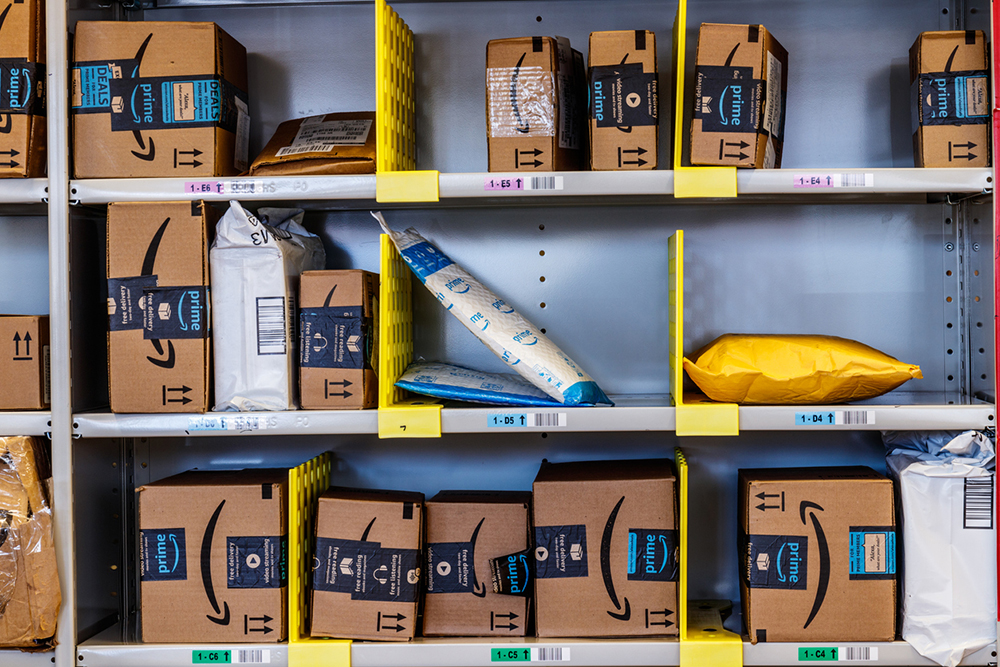
$7.4 billion…
…is how much South Korean automaker Hyundai plans to invest in EV manufacturing and research in the U.S. by 2025. The company’s electrified GV70 will be its first EV to be produced at the Hyundai plant in Alabama.
26 mph…
…is the top speed of the Retrospec’s new Tidal Rev electric longboard, which can go up to 15.5 miles on a full charge.
3.3 %…
…decrease in online spending occurred over the course of March 2022. By comparison, spending at brick-and-mortar stores rose by 11.2 percent, according to Mastercard SpendingPulse.

DEALERSCOPE PODCAST
Welcome to the Dealerscope Podcast – Your Source for all B2B trends in Retail, Tech and Biz!
In the high-strung consumer electronics retail business, it can be hard to take a moment to step back and breathe. The Dealerscope Podcast gives CE retail leaders the chance to kick back, relax, and talk shop in a casual setting.
Get Dealerscope
and Connected Design
delivered to your doorstep
or to your email.
Click on the links below to update how and where you receive your issues! Change your mailing address or request a change from print to digital, subscribe to our newsletters, or just head to our websites.
CONNECTED DESIGN
Subscribe to Print Magazine
Renew Your Subscription
Subscribe to Newsletters

OFFICES
100 S. Juniper St., 3rd Floor
Philadelphia, PA 19109
132 West 31st Street, 9th Floor
New York, NY 10001
EDITOR IN CHIEF
Tom Samiljan
CT LAB EDITORS
Sam Hitt
Leontine Dixon
Miriam Dixon
CONTRIBUTORS
Al Giazzon
Mike Kobrin
Elizabeth Parks
John R. Quain
Egon Sanders
David Singer
Stephen Silver
Lloyd Wood
CREATIVE
Astrid von Krenski
(940) 727 8595
avkrenski@ctlab.media
CHIEF SOCIAL MEDIA AND WEB EDITOR
Brenda Thelusca
(561) 752-6670
bthelusca@ctlab.media
GROUP PUBLISHER
Tony Monteleone
(718) 216-2046
tmonteleone@ctlab.media
OPERATIONS MANAGER
Vicki Manucci
vmanucci@ctlab.media
CIRCULATION & DISTRIBUTION
Carrianne Ramsey
cramsey@ctlab.media
ACCOUNTING/HR MANAGER
Catalina Gonzalez
cgonzalez@ctlab.media
CHIEF OPERATING OFFICER
Alice Schmalzl
(940) 612-9581
aschmalzl@ctlab.media
OFFICES
100 S. Juniper St., 3rd Floor
Philadelphia, PA 19109
132 West 31st Street, 9th Floor
New York, NY 10001
dealerscope.com
Publisher of Dealerscope, and Connected Design
Copyright ©2022 CT Lab Global Media LLC
CT Lab Global Media is a diversified publisher of business and professional magazines. This publication is provided with the express understanding and agreement that the information and data within it will be solely for internal use and will not be used for the creation or updating of mailing lists for sale or distribution to third parties. Printed in the U.S.A.

